- Skip to primary navigation
- Skip to main content
- Skip to primary sidebar

Extra Credit Assignment Ideas that Support Student Learning
Classroom Management , Project-Based Learning , Writing
Close to the end of the semester, you likely get requests from students to complete extra credit assignments. You might be looking for extra credit assignment ideas , or maybe you’re wondering if extra credit should be allowed in the first place. Maybe you find last-minute requests annoying – grading extra credit projects can be frustrating and confusing! In this blog post, I’ll share some reasons to consider extra credit in your classroom. It can be an enriching learning opportunity for your students. You’ll also receive some examples of extra credit assignments , along with some strategies to stay organized with extra credit assignments.
Is Extra Credit a Good Thing?
Not everyone agrees that students deserve extra credit. Many teachers believe in only assigning “regular” credit. Sometimes the top performers in our class request the opportunity to boost their grades. Oftentimes, students who have unfinished assignments or lower grades request extra credit too. Teachers who do not assign extra credit often decline these requests to emphasize the importance of turning in regular assignments on time .
Meanwhile, some teachers do not assign extra credit because their schools do not allow it. School-wide policies may not permit extra credit in order to promote equitable grading practices. Before you decide whether or not you will offer extra credit, be sure to check your school’s policy.

Equitable Extra Credit Policies
Another place to consult before assigning extra credit is with any staff that teaches the same course as you. If either one of you approaches extra credit differently, your students may interpret this as inequitable . One of the main reasons that teachers believe students do not deserve extra credit is that it is unethical. There are ways to ensure that extra credit is equitable, but you will need to ensure that your colleagues are in agreement .
Students deserve extra credit when it is an opportunity offered to everyone . To ensure that your policies are ethical and equitable, do not assign extra credit on a case-by-case basis. This does not mean that everyone needs to complete an extra credit assignment. This also does not mean that every extra credit assignment needs to be the same. Equity is about access . Case-by-case simply implies that you should not approve extra credit for one student and deny it for another – unless there is a valid reason to do so.
Whether you believe students deserve extra credit or not, be sure to include your policy in your syllabus . If you allow extra credit, you may also wish to note your requirements. These can include when and how to request extra credit opportunities. Mondays Made Easy includes an Extra Credit Application with our Editable Full Course Syllabus Template .
Why Should Teachers Give Extra Credit?
Teachers should give extra credit if they support differentiation for students. When implemented properly, extra credit assignments can be a fantastic way to differentiate for different learner profiles. Many teachers hold the belief that a student’s grade in a course should reflect their understanding of the curriculum. In an equitable setting, there should be several opportunities to demonstrate that understanding.
There are multiple reasons why a student may perform poorly on an assessment. There are also multiple factors that may prevent students from being present in class or turning in work on time. Extra credit assignments, when assigned to correlate with your curriculum requirements and course expectations, provide students with another opportunity to meet course standards .
This is especially true if the extra credit is able to assess learning goals while catering to different learning styles . I saw a great example the other day of a student who baked a literal cake of symbolic elements from The Great Gatsby. Their write-up described the literary elements in the novel in relation to the cake: from rum-flavored icing to pearl necklace piping, this culinary creation fused course requirements with the student’s passion!
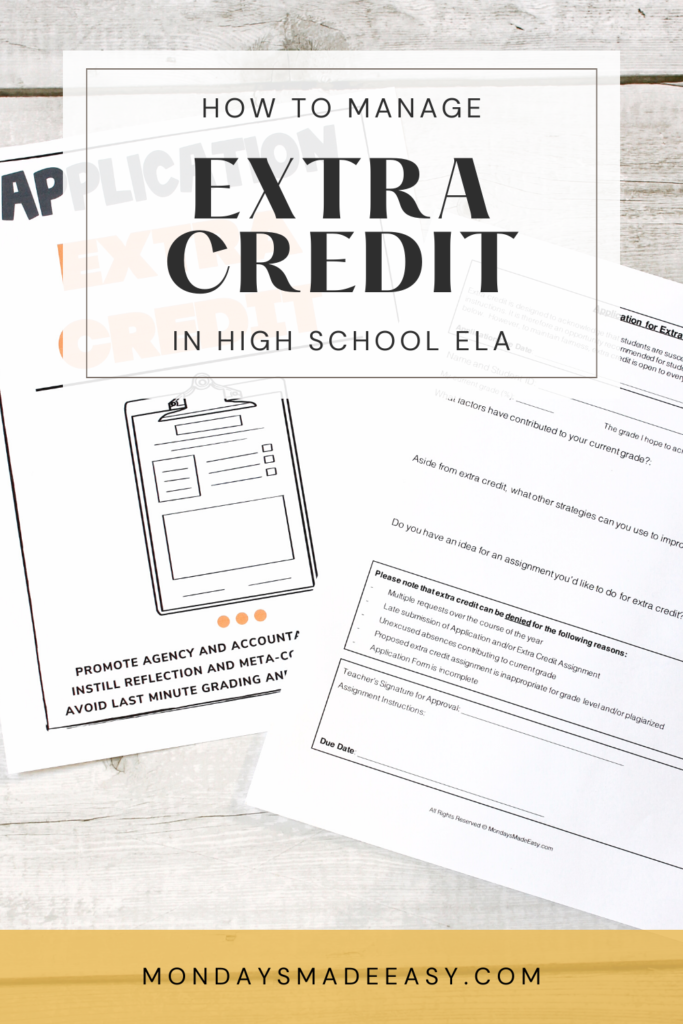
Tips for Assigning Extra Credit
One reason why teachers hate extra credit is that it can be a real headache! Keeping track of extra credit assignments and due dates requires additional effort on our part. On top of that, grading additional assignments around report card time is stressful. Thankfully, these hardships are minimized with a simple system in place.
Mondays Made Easy’s FREE Extra Credit Application is a great tool to help you keep track of extra credit assignments and requests. Students typically ask for extra credit in person; an application provides a paper trail for these conversations. Additionally, an application provides space to note assignment instructions and due dates – if your students are anything like mine, they might need a reminder about these details.
Extra credit applications can also double as a metacognitive reflection tool . I often have students explain why they need the extra credit in the first place. This provides them the opportunity to reflect on their performance and participation in the course. If the same student repeatedly asks for extra credit in your class, it can also be useful to have a record of each request . This can provide you both with documentation to discuss the student’s habits and performance.
A final reason why I love using extra credit applications is that they encourage students to be proactive . I introduce my extra credit application with my syllabus at the start of the course. I notify students that I require extra credit applications to be submitted three weeks before report cards. This sets the expectation that extra credit requests should not be made last minute. I also schedule assignments to be turned in before grades are finalized. This eliminates any last-minute grading .
Extra Credit Assignment Ideas for English Class
To simplify extra credit assignment ideas, you can adopt the popular approach of offering an assignment re-do to students. This is the easiest way to avoid additional grading while accommodating extra credit requests.
Another approach to extra credit that requires very little assessment is to implement a pass system . At the start of the semester, you can provide each student with a number of passes. For example, each student might receive three hallway passes and one late pass. In order to receive extra credit, students must have all of their passes remaining at the end of the semester. If your school policy allows, you can give students bonus points for simply showing up to class on time and avoiding hallway distractions.
For novel studies , you can offer students the opportunity to create a movie trailer. This example for an extra credit assignment idea requires a bit of effort, but it is a great alternative assessment for older students . A movie trailer will prompt students to avoid simple plot summaries and establish characterization and theme. To facilitate this assignment, Mondays Made Easy offers a Movie Trailer Project Outline and Rubric .
If your students have written research essays , you can offer them the opportunity to turn their work into a “ real-world resource .” A “real-world resource” is any type of media or document that delivers students’ research to the general public. This example of an extra credit assignment is a great opportunity for differentiation because it allows students to be creative and select any medium they like. Mondays Made Easy also offers a Real-World Resource Assignment Outline and Rubric .

Aligning Extra Credit Assignment Ideas with Your Curriculum
When it comes to selecting an extra credit assignment idea, the most important consideration should be how the assignment aligns with your curriculum. If you’re not sure what to assign for extra credit, one option could be to review the student’s performance . If they scored low on a particular assessment, it would make sense to opt for an assignment that covers similar curriculum strands .
For example, the Common Core State Standards require students to “write arguments to support claims in an analysis of substantive topics or texts, using valid reasoning and relevant and sufficient evidence” ( English Language Arts Standards – Writing – Grade 9-10 ). If your student requesting extra credit scored lowest on an assessment for this strand, it would not be best practice to assess an argumentative writing assignment.
Mondays Made Easy’s Extra Credit Application prompts students to reflect on their performance in your course. It also offers them the opportunity to suggest extra credit assignment ideas . Oftentimes, students are able to recommend an assignment idea that evaluates similar skills to those that were evaluated poorly on a previous assessment. If their recommendation doesn’t align, you can facilitate a conversation to guide them in the right direction. This is a great way to implement differentiation and student choice . It also enables you to incorporate your students’ examples of extra credit assignments into your curriculum. Students have great ideas, and I’ve benefitted from reusing their suggestions with future classes!
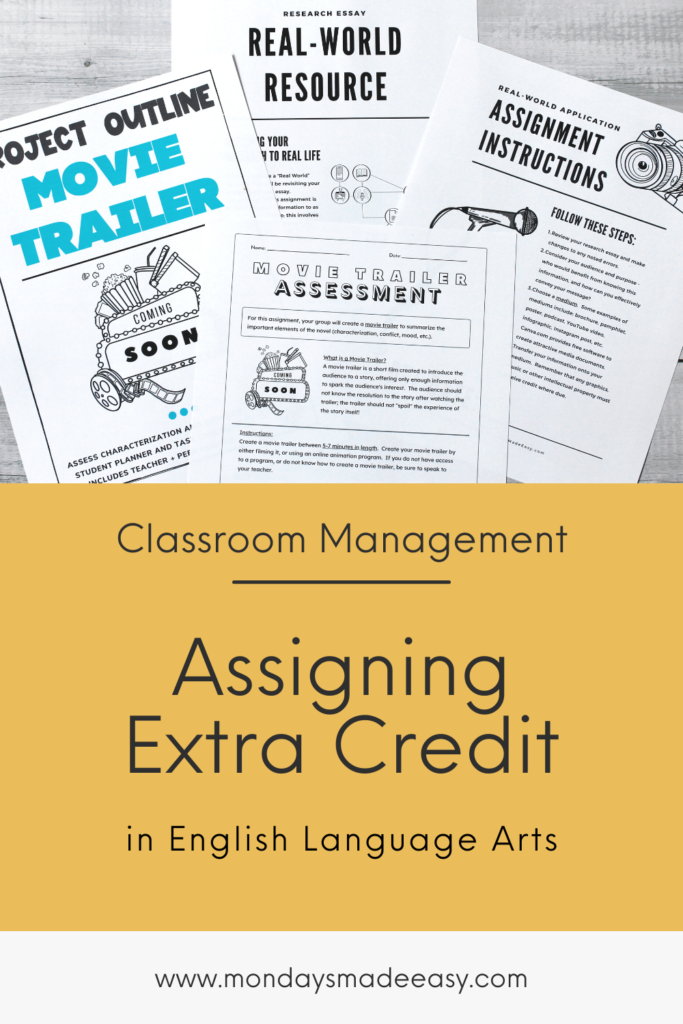
Extra Credit Assignment Ideas: Important Takeaways
Assigning extra credit remains a matter of personal preference. You know what works best for your students, and your professional discretion will best determine whether or not extra credit is an opportunity that they need. As mentioned, it is best to check if your approach aligns with your school policy and your colleagues’ practices. If you do decide to offer your students extra credit assignments , I hope that the suggestions and ideas in this blog post support you in your efforts!

You're signed out
Sign in to ask questions, follow content, and engage with the Community
- Canvas Instructor
- Instructor Guide
How do I give extra credit in a course?
- Subscribe to RSS Feed
- Printer Friendly Page
- Report Inappropriate Content
in Instructor Guide
Note: You can only embed guides in Canvas courses. Embedding on other sites is not supported.
Community Help
View our top guides and resources:.
To participate in the Instructurer Community, you need to sign up or log in:
- Effective Classroom Management
Extra Credit in College Courses: Blessing or Curse? Weighing the Pros and Cons
- November 1, 2023
- Dunja Trunk, PhD
Picture it: Fall semester on a suburban college campus in a dimly lit classroom. I’m handing back graded papers to my students and as I make my way to the back of the room, I can’t help but notice a dejected student, Ben*, who has just received a failing grade on his latest assignment.
Ben: ( sighing loudly ) “Professor Trunk, can I talk to you for a minute?”
Me: ( looking concerned ) “Of course, Ben. What’s on your mind?”
Ben: ( nervously ) “Well, Professor, I’ve been struggling in your class, and I was wondering if there’s any way I could do some extra credit to boost my grade.”
Me: ( raising my eyebrow ) “Extra credit, Ben? You’re barely hanging on as it is. Are you sure you can handle more?”
Ben: ( desperate ) “I promise, Professor, I’ll put my heart and soul into it. I’ll do whatever it takes! Just give me a chance!”
Does this scenario sound familiar? For me, it is a common occurrence – one that I’ve dreaded for most of my teaching career. What is the best way to handle Ben’s request? Is extra credit a blessing or curse for students? What about for the instructor? After 16 years in the classroom, you might think I have the answer to this question. Spoiler alert: I do not; however, I do have thoughts about the pros and cons of extra credit assignments. Allow me to share.
If Ben caught me in a generous mood, I would likely acquiesce to his request for an extra credit assignment. Indeed, there are benefits to assigning extra credit. If Ben is struggling with his grades in my course, the opportunity to complete an extra credit assignment may be enough to motivate him to stay engaged. Knowing that he will have an opportunity to boost his grade might encourage Ben to participate more in class discussions and, fingers crossed, to earn better grades on future assignments in the class.
If I tap into my own memories of being an undergraduate student, I might also be more likely to accept Ben’s request for extra credit work. I always appreciated it when my professors had empathy for (read: took pity on) their students who were desperate to make up for that horrible grade on the last exam. We all have challenging times and if a small act of kindness from his professor could make the difference between Ben failing the class or getting back on track and making up for his previous mistakes, why not bet on kindness?
What if Ben is doing poorly in the class because he just has not been able to relate to the material? Sure, that sounds like a Ben problem, but as a psychology professor, my goal is to inspire students to be excited about learning in general and about psychology specifically. Could an extra credit opportunity that is tailored to Ben’s interests and academic strengths possibly spark his interest in psychology? If so, my answer to his request is a solid yes. After all, as an educator, it is my job to help students connect with the subject matter and hopefully take ownership of their own learning in the process.
If you’re someone who regularly gives in to requests for extra credit, but you’re ambivalent about the merits of these assignments, rest assured that the advantages can be significant. However, we must also recognize that extra credit work can become a crutch for some students and that assignments without rigor can ultimately compromise the integrity of a course. Let’s look at some of the drawbacks of complying with Ben’s request.
One of my most significant concerns with extra credit is the potential for introducing grade inflation into my courses. I am wary of artificially boosting students’ grades and have therefore become stingier with extra credit assignments over the years. An assignment that accurately assesses a student’s true understanding of the material takes time to plan and grade – time that we educators do not often have enough of. Simply assigning busy work just for the sake of boosting students’ grades undermines the integrity of our standards and our grading system.
While Ben may have been the only student to ask for extra credit work that day in class, it would arguably be unfair to give him the opportunity to boost his grade without also allowing his classmates the chance to do the same. Extra credit, if offered, should be equally accessible to all students, otherwise, it can lead to disparities in final grades. Whether students complete the work is often a matter of time and motivation – indeed of necessity. Some students simply do not need extra credit to do well in a course.
Extra credit assignments should be just that – extra . Students’ focus should be on the primary course material and scheduled exams and assignments. Any bonus assignment that diverts their attention away from regular coursework is probably doing more harm than good. The promise of extra credit might also encourage students to procrastinate or even ignore primary course material in favor of completing extra credit assignments later. When students ask for extra credit work, I worry that their motivation is less to master the foundational concepts of the course and more to simply accumulate extra points toward a final grade. In the latter case, the extra credit assignment could easily serve as merely a distraction from core material.
While opportunities for extra credit certainly have their virtues, to this day, I dread the inevitable requests that most frequently rear their heads around midterms and finals when students are reckoning with their grades. To minimize my own discomfort with these requests, I carefully design extra credit opportunities (while secretly hoping that I won’t have to implement them), and I always keep in mind that extra credit assignments must complement student learning objectives, or they become glorified busy work.
In the case of Ben, he readily accepted the opportunity to do a reverse psychology experiment, and I am pleased to report that in his pursuit of extra credit, Ben completed the assignment with humor and creativity and went on to pass the class as well.
*Name changed to protect privacy.
Dr. Dunja “Dee” Trunk, a professor of psychology at Bloomfield College of Montclair State University, has a passion for teaching and a genuine belief in the transformative power of education.
Stay Updated with Faculty Focus!
Get exclusive access to programs, reports, podcast episodes, articles, and more!
- Opens in a new tab
Already a subscriber, log in now.
Weighting Grades, Giving Extra Credit, and Other Tips on Managing Assignments and Grades in Canvas
by Cecilia Lo | Aug 20, 2018 | Canvas , Canvas Features/Functions , How-tos

Canvas provides a fully functional gradebook that can help both instructors and students to keep track of their progress in a course. Once you figure out its few quirks, you will be able to manage grades with ease.
I. Some Terminology: Assignment Groups vs. Assignments, & How They Relate to Gradebook Columns II. Weighting Grades III. Muting Grade Notifications IV. Grade History – Who Changed The Grade When? V. Using Grading Schemes VI. Curving Grades VII. Giving Extra Credit VIII. Tools and Course Setup for Multiple TAs IX. Excluding an Assignment from the Course’s Final Grades X. Filtering by Modules, Automatic Late Policies, & Other New, Helpful Functions in the New Gradebook XI. Resources
I. Some Terminology: Assignment Groups vs. Assignments, & How They Relate to Gradebook Columns
There are two common sources of confusion in understanding and using Canvas assignments and gradebooks. One is the distinction between Assignment Groups and Assignments. Assignment Groups are categories of assignments, such as problem sets, papers, quizzes, exams, presentations, and participation. They are important for organizational purposes and particularly important if you want to weight grades. Assignments are individual assessment items that receive grades, as, for example, first paper, second paper, or final paper. Assignment Groups and assignments are created separately. You can move assignments into different Assignment Groups by dragging them on the Assignment Index page or editing the Assignment.
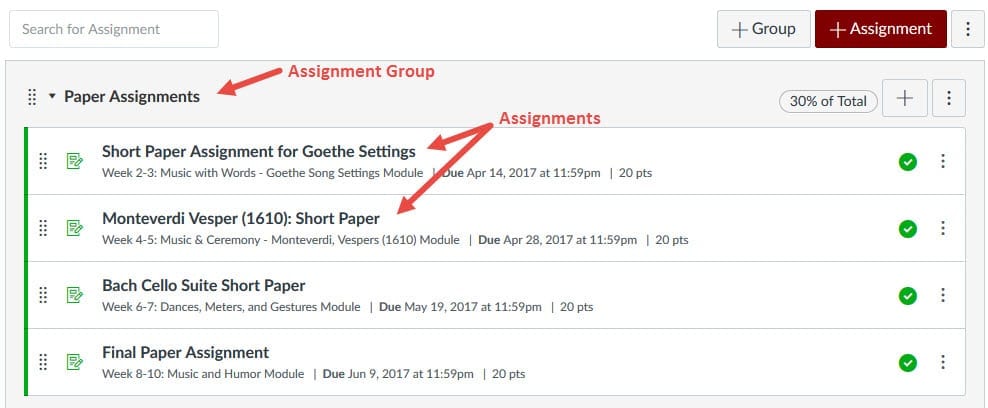
Assignment groups vs Assignments
A second common source of confusion is how to create gradebook columns. In Canvas, assignments are tightly integrated with the Gradebook and the only way to create a gradebook column is to create and publish an assignment . This may seem unintuitive at first glance, as not all assignments require online submissions (e.g. attendance and participation or assignments done on paper). However, instructors can choose different submission types when they create an assignment— No Submission, Online, or On Paper . The one-to-one correspondence between the number of assignment items and the number of gradebook columns ensures that grading policy is transparent to the students and that both instructors and students always see the same number of assessment items.
II. Weighting Grades
You can have Canvas automatically calculate weighted grades in just a few clicks: on the Assignment Index page, click Options , select Assignment Group Weight , then enter the percentages for each Assignment Group. For example, in a course where the grades are determined as follows:
The process for weighting grades is:
To weight grades, go the the Assignments page, click on the Options button, select Assignment Groups Weight , select the Weight final grades based on assignment groups check box, enter the weights, and click Save .
How Canvas Calculates Weighted Grades for an Assignment Group
Canvas determines weighted grades by calculating:
- the grade (in percentage) of individual Assignment Groups (sum of points scored divided by total possible points);
- the total grade (sum of Assignment Group grades multiplied by their respective weights).
In the example for “Paper Assignments” Group above, there are 4 assignments, each worth 20 points; together they add up to 80 points. The Assignment group counts 30% towards the total grade. If a student scores 18, 16, 10, and 15 respectively, then
The subtotal grade for “Paper Assignment” is: (18 + 16 + 10 + 15)/80*100% = 73.75% The contribution of “Paper Assignment” to the Total grade is: 73.75% * 0.3 = 22.13%
Weighted Grades within an Assignment Group
In the above example, because each assignment has the same maximum points (20 points), each assignment contributes equally within the Assignment Group. If you wish a particular assignment to weigh more, just make sure it has a higher number of total points, or assign it to a separate Assignment Group.
Tips : If you have many assignments (about 10 or more) in one Assignment Group, and the total points for each assignment vary by one or two points, then by arithmetic the assignments contribute essentially equally to the Assignment Group grades, as the difference between each assignment after multiplying by the weighted percentage would be relatively small. (e.g. 1 point in an Assignment Group with a total of 100 points and which counts as 30% of the total grade is 0.3 points of the total grade.)
How Weighted Grades Appear in the Gradebook
In the Canvas Gradebook, each gradebook column (with linked heading) shows the raw points for an assignment (unless you have applied grade curving to it); the Assignment Group column (with black heading) shows the percentage a student scored for that Assignment Group; and the Total column shows the final, weighted grade.
In the example above, the Assignment Group column for “Paper Assignment (30.00% of grade)” is 73.75%.
NB : If a student didn’t submit a particular assignment, be sure to give it zero points. If you leave the score blank ( – ), Canvas will treat it as excused and ignore it in its calculation of the Assignment Group subtotal and Total scores.
For more about weighting grades, see: https://community.canvaslms.com/docs/DOC-10059-415267002
III. Muting Grade Notifications
When instructors enter grades into Canvas’ gradebook, a notification is sent to the student automatically . Some students are prone to panic if they find that their peers have received their grades but they have not. You can release grades to all students simultaneously if you select Mute Assignment and stop notifications from going out until you “unmute” the assignment. Muting assignments allows you time to review and make grade adjustments without sending students multiple notifications.
To mute an assignment, go to Grades, click on the options dropdown for the assignment, and select Mute Assignment:

Mute Assignment link in Canvas Gradebook
NB : Canvas does not include muted assignments in the Assignment Group and Total grade calculations—if it did, students would be able to calculate backwards and figure out what their grades are. Be sure to unmute assignments when you have finished grading them so that the gradebook calculations are correct.
For more about muting assignments, see: https://community.canvaslms.com/docs/DOC-12961-4152724339
IV. Grade History – Who Changed The Grade When?
From time to time you may wish to track how a student’s grade for a particular assignment changes over time, especially when there are multiple instructors or TAs giving grades in a course. Canvas’ Grade History tool can be helpful in such cases.
To access Grade History, click on the Options (gear) icon in Grades and select View Gradebook History . (In the New Gradebook, select the Gradebook dropdown, then “Gradebook History…”.)
To view grade history in the old Gradebook, select View Gradebook History from the gear icon on the Grades page, enter filter parameters and click the Filter button.
How to read Gradebook History
- The Before column shows the grade before the change at a particular date and time (row).
- The After column shows the grade after the change at a particular date and time (row).
- The Current column always shows the latest grade; it is the grade a student has now.

Example of Grade History
In the example above, on Jun 27, 2018 at 4:25pm, the Before column is empty because it is the first time a grade (0/20) is entered. On Aug 16, 2018, this grade is changed from 0/20 to 20/20. The Current grade for all rows is 16/20 because on Aug 17, 2018, the last time this grade was edited, the grade has been changed from 20/20 to 16/20.
NB : The dropdown selection can take a few seconds to display, especially if there are many students in a course. Be sure to click the maroon Filter button at the end to filter the results. You can filter for more than one category; for example, you can filter for student name and assignment name simultaneously.
V. Using Grading Schemes
You can apply a specific grading scheme to your assignment and/or overall course grade so that each letter or performance grade corresponds to a specific numeric grade range (e.g. A/Excellent = 91% to 100%; A-/Good = 88%-90%; etc). Once you have created a grading scheme, it can be reused in other courses you teach with just a few clicks.
Select Grading Scheme for an Assignment
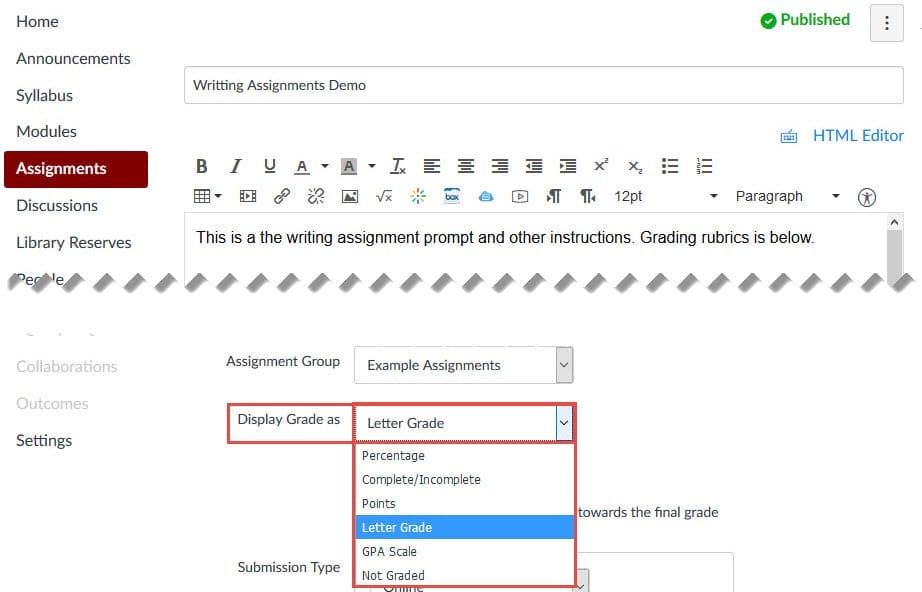
To display letter grade for an assignment, edit the assignment, choose Letter Grade under the Display Grade as dropdown menu.
- Choose the appropriate grading scheme (see “Choose/Create New Grading Schemes” below).
Choose/Create New Grading Schemes
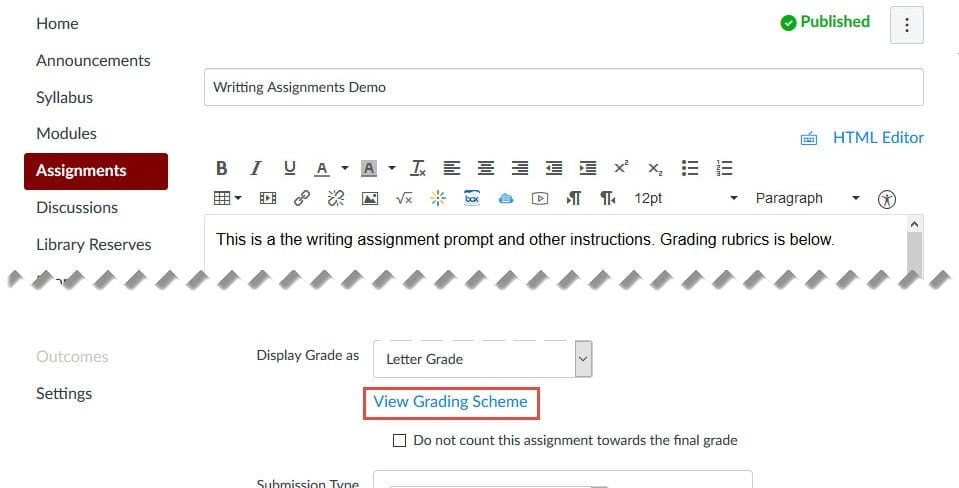
Click on the View Grading Scheme link under Display Grade as to choose the appropriate grading scheme.

Click on the Select Another Scheme link at the top right to select another grading scheme.
- To create a new grading scheme, click manage grading schemes link at the bottom right, then click the Add grading scheme button on the right.
Use Grading Scheme for the Total Grade in Your Course
You can display the Total grade of your course as a letter/performance grade by going to Settings > Course Details > Select the check box for Enable course grading scheme > Choose the appropriate grading scheme > Click the Update Course Details button at the bottom of the page.
To enable grading scheme for the course total grade, go to course Settings , check the Enable course grading scheme box, click the Select grading scheme link, then select the appropriate grading scheme, click Done , then click the maroon Update Course Details button.
For more information, see:
- [Overview] How do I use grading schemes in a course? https://community.canvaslms.com/docs/DOC-13067-4152206341
- How do I add a grading scheme to an assignment? https://community.canvaslms.com/docs/DOC-10216-415282270
- How do I enable a grading scheme for a course? https://community.canvaslms.com/docs/DOC-12906-415257089
- How do I add a grading scheme in a course? https://community.canvaslms.com/docs/DOC-10313-415257090
VI. Curving Grades
You can use the Canvas Gradebook to curve grades for individual assignments. When you enter a desired average grade, Canvas will automatically adjust the scores as a bell curve 66% around the average curve.
Grade curving is available for assignments only ; if you wish to curve the total grade of a course, you will need to do so manually. Grade curving cannot be undone (although you can use Gradebook History to view pre-curved grades) and is advisable in courses where only a certain number of students can pass, or when you require a fixed distribution of grades distributed throughout the class.
Step-by-step instructions on curving grades are available at: https://community.canvaslms.com/docs/DOC-12832-415255003
VII. Giving Extra Credit
Do you want to give extra credit to students but are unsure how get Canvas Gradebook to recognize it? There are a few ways to do this:
Method 1: Add Extra Points to an Existing Assignment/Quiz
You can give extra credit to a particular assignment by adding the extra points to the total points a student scored, even if the student received a perfect score. Canvas allows you to give points greater than the highest possible points.
For example, If an assignment is worth a total of 100 points, a student earned a perfect score of 100, and you want to reward them with 5 extra credit points, you can enter 105 as the grade for the assignment.
If you use Canvas’ SpeedGrader for grading, you can enter the extra points in SpeedGrader. If you use rubrics in conjunction with SpeedGrader, you can add the extra points either to an existing rubric criterion or to an “Extra Credit” criterion. If you decide to add an “Extra Credit” criterion, make sure that the assignment point total excludes the total maximum extra credit points (i.e. the rubric is worth more points than the assignment) so that the actual assignment points are not affected by whether a student receives extra credit or not.
For example, if your rubric has four criteria with 4 maximum points each, and an “extra credit” criterion with 2 points each, then the maximum point total for your rubric is 4×4 + 2 = 18 points. But your assignment point total should be 16 points.
You can give extra credit in Quizzes as well. To adjust the point value for an entire quiz, use fudge points .
Method 2: Grant Extra Points in a Stand-alone “Extra Credit” Assignment and Gradebook Column
If you want to keep track of extra credit for the course as a whole, you can create a stand-alone extra credit assignment and gradebook column and adjust a student’s points as needed.
If you don’t weight your grades , you can create a separate assignment with 0 points. Any extra points given in this gradebook column will be added to the total points for the course.
If you weight your grades with assignment groups, you will need to create an extra credit assignment group with a weight greater than 0% and an assignment with greater than 0 points in order for Canvas Gradebook to calculate the total score correctly. All the assignment groups in your course plus the extra credit assignment group should weigh more than 100% in total.
One example of a correct setup for assignment groups with a maximum of 10% (or 10 points) extra credit for the course is:
Notice that the first 4 assignment groups, containing assignments that all students are assessed on, total to 100%. This ensures that any assignment placed within the Extra Credit assignment group will have either a positive or neutral effect on your students’ overall grade.
- If you are weighting your assignment groups, please pay attention to how weighted groups can affect the Gradebook if assignments are worth zero points.
- If you have drop rules set in an assignment group, adding extra points may affect your students’ scores.
For a detailed, step-by-step guide on how to give extra credit within Canvas, see: https://community.canvaslms.com/docs/DOC-9940-415278195
VIII. Tools and Course Setup for Multiple TAs
If you have multiple TAs working from the same Canvas course site and they are each assigned to a specific group of students, Academic Technology Solutions can help you set up your course site so that they only see the grades of the students they are responsible for. To get started, email the URL of your course site and a brief description of your needs to [email protected] .
IX. Excluding an Assignment from the Course’s Final Grades
If you wish to provide feedback for assignments without the assignment counting toward Gradebook calculations, you can exclude the assignment in the final grade calculation. (Note: this excludes the grade for all students. If you want to assign an assignment to a specific group of students, you should specifically assign course sections , assign individual students , or assign course groups to the assignment.)
For step-by-step instructions, see: https://community.canvaslms.com/docs/DOC-10120-4152618765
Alternatively, you can have Canvas automatically drop the lowest (or highest) grade in an assignment group. See https://community.canvaslms.com/docs/DOC-9880-4152232976 for step-by-step instructions.
X. Filtering by Modules, Automatic Late Policies, & Other New, Helpful Functions in the New Gradebook
In January 2018, Canvas released the New Gradebook, which offers a number of enhanced features, such as filtering by modules, automatic late policies, and customizable coloring. The current gradebook is expected to be deprecated and replaced by the New Gradebook sometime in the second half of 2018. For more information on how to opt-in and use the new features, see ATS’ “ Introducing the New Gradebook ” blog post.
XI. Resources
You can see the complete Instructor Guides for the topics discussed above at:
- Assignments
- Discussion Forums
- Online Quizzes
- Speedgrader
Recent Posts
- Link to Library Resources in Canvas
- Create Positive Classroom Relationships with NameCoach
- Assess the Big Picture for Your Class Using Canvas Outcomes
- Schedule Page Publication in Canvas
- Support Your Pedagogy with Anonymous Canvas Discussions
Monthly Archives
- February 2023
- January 2023
- December 2022
- November 2022
- September 2022
- August 2022
- February 2022
- October 2021
- February 2021
- January 2021
- December 2020
- November 2020
- October 2020
- September 2020
- August 2020
- February 2020
- January 2020
- December 2019
- November 2019
- October 2019
- September 2019
- February 2019
- January 2019
- December 2018
- November 2018
- October 2018
- September 2018
- August 2018
- February 2018
- January 2018
- December 2017
- September 2017
- August 2016
- October 2014
- September 2014
- Canvas Features/Functions
- Symposium for Teaching with Technology
- Teach Smart with Technology
- Uncategorized

University Center for Teaching and Learning
How to assign extra credit in canvas, extra credit overview, create a new assignment, add extra points to an existing assignment, fudge points, adding extra credit to the rubric.
Assigning extra credit may take some getting use to because there is no place within the assignments settings that you check to make the assignment worth extra credit. Yet, because of this, Canvas gives a lot of flexibility in how extra credit can be given to students.
Ways to Add Extra Credit
- Create A New Assignment Using Assignment with No Submission
- Using a Rubric
For specific information on how to add extra credit using the above methods, see the following Canvas Instructor Guide: How do I give my students extra credit?
*Note – You can add extra credit manually by downloading/exporting your Gradebook to Excel. This will be down in the Grade Override Column and to be completed at the end of the course, when entering final grades.
Keeping that in mind, the biggest determinant of how you set up your extra credit in Canvas is whether you are using a points-based gradebook or a weighted gradebook. A Points-Based Gradebook allows for the most flexibility in offering extra credit. The tabs above include ways to add extra credit for Point-Based Gradebooks.
Note: Adding extra credit to a Percentage-Based Gradebook does not work that well in Canvas. In general the best way to add extra credit to a percentage based gradebook is to NOT ADD EXTRA CREDIT UNTIL AFTER ALL OTHER COURSE GRADES ARE ENTERED INTO THE GRADEBOOK (including the final exam). Extra credit WILL NOT calculate correctly until ALL OTHER COURSE GRADES ARE ENTERED. This is because by adding the extra credit the gradebook is going over the normal 100%. You can add extra credit by adding an Assignment Group (category) for “extra credit” and make it worth the percent you would like the overall course grade to be raised if students get the full amount of extra credit.
Navigate to your course Assignments Page, and add a new assignment worth zero points. Make sure that the submission type is either “no submission” or “paper submission,” and click Save & Publish to create a column for this extra credit “assignment” in your Gradebook. If you are using a point structure and do not have weighted assignment groups, follow these steps.
- Click Assignments in the course navigation
- Click +Assignment
- Type the Assignment Name (for example, Extra Credit)
- Type 0 for Points
- Choose No Submission for the Submission Type
- Click Update Assignment
- Click Publish
After students complete the work, manually add points in the Gradebook.
- Click Grades in the course navigation
- Navigate to the new assignment (Extra Credit)
- Type the points for those students receiving extra credit
Adding extra points to an Assignment you’ve already created you will need to manually enter the extra points in the Gradebook.
In this example, the assignment is worth 40 points. Adding 5 extra points will bring the assignment total for this student to 45 points. The added points will increase total points calculated in the Gradebook’s final grade.

You can use Fudge Points to add extra points to a quiz. Fudge points allow you to manually add or remove points from a student’s overall quiz score.
- Click Quizzes in Course Navigation
- Click on the quiz you want to add extra points to
- Click SpeedGrader
- In the Student drop-down menu, select the name of the student that you want to give extra points to
- Enter the number of points you want to add to the overall quiz score in the Fudge Points field at the bottom. The Final Score shows the final score this student will receive.
- Click Update Scores to save the change to the student’s quiz score.
*Note – Fudge Points can only be added to Quizzes.
If you use a rubric to grade an assignment, you could make an additional criterion to the rubric for extra credit. Make sure the rubric is worth more points than the assignment so when you give students extra points it doesn’t affect the actual assignment points. For additional information on creating a rubric, please check out the Canvas Guides
- Generative AI Resources for Faculty
- End-of-term Teaching Surveys
- 1-on-1 Teaching Consultations
- Canvas and Ed Tech Support
- Reporting a classroom problem
- Requesting equipment for your classroom
- Not sure what you need?
- Accessibility
- Center for Mentoring
- Creating and Using Video
- Diversity, Equity and Inclusion
- General Pedagogy
- Graduate Student/TA Resources
- Remote Learning
- Syllabus Checklist
- Student Communication and Engagement
- Technology and Equipment
- Classroom & Event Services
- Assessment of Teaching
- Classroom Technology
- Custom Workshops
- Open Lab Makerspace
- Pedagogy, Practice, & Assessment
- Need something else? Contact Us
- Educational Software Consulting
- Learning Communities
- Makerspaces and Emerging Technology
- Mentoring Support
- Online Programs
- Teaching Surveys
- Testing Services
- Classroom Recordings and Lecture Capture
- Creating DIY Introduction Videos
- Media Creation Lab
- Studio & On-Location Recordings
- Video Resources for Teaching
- Assessment and Teaching Conference
- Diversity Institute
- New Faculty Orientation
- New TA Orientation
- Teaching Center Newsletter
- Meet Our Team
- About the Executive Director
- Award Nomination Form
- Award Recipients
- About the Teaching Center
- Annual Report
- Join Our Team
Instructional Technology Blog
ITG supports faculty use of technology for teaching and learning at Emerson College

- by Isobel Rounovski
- December 12, 2023 August 17, 2023
Setting Up Extra Credit in Canvas

One of the most common questions we get each semester is about how to set up extra credit in Canvas. There are multiple ways to do so, but we’ll go over the two most common methods in this blog post.
Create an extra credit assignment using weighted assignment groups
The first method for setting up an extra credit assignment is to add an extra credit weighted assignment group containing only the extra credit assignment. For example, let’s say you add an Extra Credit assignment group worth 3%. Your grading breakdown may look something like the following:
Since all the assignment groups total to 100% before the extra credit group is added, the addition of the extra credit group means that each student now has an opportunity to earn up to an additional 3% on top of their final grade. It also means that no student will be penalized for not completing the extra credit assignment, since everyone still has an opportunity to earn a full 100% over the course of the semester by completing all the other assignments.
You can only use this method if you already use weighted assignment groups.
Create an extra credit assignment with zero point value
The other method is to add an extra credit assignment worth 0 points, but then grade it out of a predetermined, non-zero point value (and let students know ahead of time how you’ll be grading the assignment). You can use this method regardless of if your assignment groups are weighted or unweighted.

The weight of the extra credit assignment depends on whether you use weighted assignment groups or not, and how many points your other assignments are worth. We’ll go over a couple examples that show how you can calculate the weight of the extra credit assignment.
Example 1: weighted assignment groups
For this example, let’s say that you want to add an extra credit discussion, and your Discussions assignment group is weighted at 20%. You have 10 discussions in the group already, worth 10 points each. Remember, the extra credit assignment you add as the 11th discussion to the group will be worth 0 points, but graded out of a non-zero point value. In this example we’ll say that the discussion will be worth 0 points but graded out of 10 points.
The discussion group still is worth a total of 100 points, but students can now earn a maximum of 110 points. This means that the total maximum credit a student can earn for the discussions group weighted at 20% is (110/100)*20% = 22% contributed towards their final grade. Since the pre-extra credit maximum percentage possible for discussions was 20%, and now students can earn up to 22%, in effect the extra credit assignment is worth 2% of final grades (in other words, each student now has an opportunity to earn up to an additional 2% on top of their final grade by completing the extra credit discussion).
Example 2: unweighted assignment groups
This example involves a grading set up that uses a lump sum of point values to calculate final grades, rather than using weighted assignment groups. Let’s say the point value for all assignments in the course is 200 points, which means student’s final grades are calculated by taking the total points earned for all assignments divided by 200 points possible. You add an extra credit assignment worth 0 points, but it will be graded out of 10 points, meaning a student can now earn a maximum of 210 points out of 200. A student earning the maximum number of points would have a final grade of 210/200 = 105%, which means that by completing the extra credit assignment, a student can earn up to an additional 5% on top of their final grade.
Grading students who do not complete the extra credit
Regardless of which of the two methods you may use, when grading the extra credit assignment it’s best to excuse students who do not complete the assignment rather than give a zero.
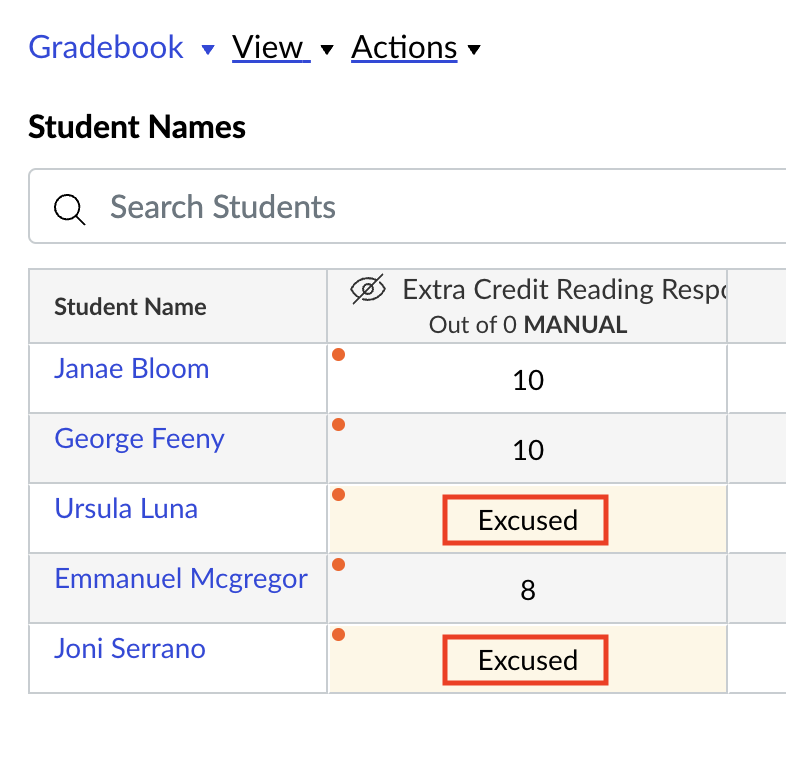
Giving those students a zero will not penalize them since the opportunity for each student to earn a full 100% for the course is still there, but note that if a zero for the extra credit is applied before all other assignments are graded, the zero will artificially deflate grades (giving the appearance that students are being penalized for not completing the extra credit). This happens because any yet-to-be-graded assignments are ignored by Canvas in final grade calculation. Therefore, the best way to avoid this is to mark students as “Excused” rather than giving a zero. Any student who is marked as “Excused” for an assignment will have that assignment excluded from their final grade calculation.
Need more help with setting up extra credit?
Don’t hesitate to reach out to us at [email protected] or 617-824-8090 for further assistance.
Featured image by Memed_Nurrohmad from Pixabay
Related Posts
Watch this on how to make your next semester less stressful
Student Annotation Assignments
Understanding Links in Canvas

- school Campus Bookshelves
- menu_book Bookshelves
- perm_media Learning Objects
- login Login
- how_to_reg Request Instructor Account
- hub Instructor Commons
- Download Page (PDF)
- Download Full Book (PDF)
- Periodic Table
- Physics Constants
- Scientific Calculator
- Reference & Cite
- Tools expand_more
- Readability
selected template will load here
This action is not available.

15.3: Should teachers allow extra credit?
- Last updated
- Save as PDF
- Page ID 87660

- Jennfer Kidd, Jamie Kaufman, Peter Baker, Patrick O'Shea, Dwight Allen, & Old Dominion U students
- Old Dominion University
By: Lindsey Layne
"I cannot teach anybody anything, I can only make them think.-Socrates
Learning Objectives
- The reader should be able to understand reasons why teachers allow extra credit -The reader should be able to understand different types of extra credit
Introduction
In today’s schools teachers are skeptic about whether or not to provide extra credit opportunities to their students. It is at the teachers discretion to implement this practice in their classroom. Some teachers oppose giving their students the chance to increase their grade with this option while others believe it is necessary.
What is extra Credit and how is it used?
Extra credit is an optional assignment of some sort that a student can do to boost his/her grade. Teachers can present an extra credit assignment in many ways. It could be a presentation, a paper, a book report, a visual aid and so much more. It serves more than one purpose when also used as a review for a test or lesson. Sometimes the points earned will only be added to a test or other assignment and other times teachers choose to put it towards a final grade. Usually these assignments are worth no more than 20 points, except for in rare cases. An example of an extra credit assignment could be related to a test. The teacher may not take up homework for an entire lesson on Rational equations. Completing the homework will be at the students discretion and on the day of test they can turn it in for 5 extra credit points on the test.
Optimistic view of Extra Credit
Teachers choose the route of extra credit assignments for many different reasons. Everyone has unpredictable things happen within their lives and sometimes it can impact sleep, time to study, or even being able to attend school. Extra credit can ease this stress and fill the gap.Usually teachers who believe this option is a positive thing, do it because they believe it allows for less stress on the students. If a student was just having a bad day and did not get the grade they hoped for on a test, they know that they can complete the extra credit assignment to boost their grade a little. Another reason may be for the simple experience of what the assignment entails. For example, if the option is to create a video or a power point presentation on the civil war, it would give the students some personal interaction with the subject matter. This knowledge could be beneficial when completing other assignments that involve the civil war. Lastly, a teacher may implement extra credit opportunity to benefit themselves. Some teachers believe that the grades the students receive is a direct reflection of how the teacher is doing their job. If most of a class bombs a test, the extra credit will hopefully relieve some of the worries that their teacher may have.
Pessimistic view of extra credit
On the opposing side of the extra credit issue, teachers can view this educational option as a negative thing. “Some teachers have a policy of no extra credit work. They feel that every student has the opportunity to do what's necessary and if they don't, they should experience the consequences.” (The English Teacher) They may think it gives the students an excuse not to do their best on a test or assignment. "The existence, or the hope of extra credit may induce students to prepare less carefully for exams and papers with the expectation that additional points can be earned on future assignments," (Wilson 2002.) If not all of the students choose to take advantage of the extra credit, the grade outcome can contain too much of a gap. The grading of additional assignments that only few students completed can also get very confusing and cause issues for the teacher. The “no extra credit” route can teach students the responsibility of planning for their test without hesitation. (The English Teacher.)
Closing the gap
When a teacher feels skeptic not to allow extra credit but still wanting their students to do well, they may try to result to something different to make it seem fair. Teachers may not like to allow extra credit to boost any grades but they could have a rule where if more than 70 percent of a class fails or receives below a 65 on an test, the teacher will implement a curve. This could be only for tests so that way students will not count on extra credit points and still do their best. The curve could be added in any way to try to make the class average within the passing zone.
Exercise \(\PageIndex{1}\)
1. What is the term for an optional assignment that can boost a student’s grade?
b. Extra credit
c. Homework
2. If a teacher wants to implement a different route other than extra credit to boost their students grades on a test, that has stipulations and the students would be unaware until after they took the test, what would the teacher do?
a. Allow a presentation to earn 5 points
b. Throw out the test and put a 100 in grade book
c. Implement a curve to put class average above passing
d. Allow for a retake to only few students
3. According to the article which example best describes a situation that could cause a student stress
a. Parents divorce
b. at the hospital all night
c. not enough sleep
d. all of the above
4. According to article which option best describes a reason for a teacher opposing extra credit?
a. teacher doesnt feel like grading extra assignments
b. students should learn that planning ahead and studying is very important without hope of extra credit
c. the test was easy enough without offering extra credit
- (Danielson, L The English Teacher. Retrieved March 19, 2009, from Teaching Strategies Web site: http://teacher2b.com/strategies/excredit.htm
- Wilson, Mark (2002). Evidence that Extra Credit Assignments Induce Moral Hazard, Atlantic Economic Journal, Retrieved March 19, 2009, from
http://findarticles.com/p/articles/mi_hb6413/is_1_30/ai_n28912014
- [email protected]

Teaching with Extra Credit
Introduction
No matter how far they stray from the standards of common-core curriculum, educators often find themselves wanting to add to their lesson plans halfway through a semester. Extra credit opportunities can often ease the circumstances of these situations, allowing students a chance to further enrich their schooling. However, educators have different opinions about the effectiveness of such a practice. Some may argue that earning additional points on their own terms may motivate students. Others argue that the opportunity discourages students’ motivation in their required assignments. By any means, extra credit has had a history of catalyzing learning in some classrooms, and highlighting inequalities of opportunity in others. Before enabling it into their classes, teachers should weigh the effectiveness of such a practice, and find fair methods of creating such opportunities for their students.
With the offering of extra credit being such a routine, yet polarizing practice, the internet is swarmed with articles and activities surrounding the topic. Utilizing the following resources could assist teachers in deciding whether to or how to blend these credits into their classroom structure.
Lesson Plans
- Extra Credit Activity Examples : This page from TeachTCI lists 10 ideas for extra credit assignments. The activities allow for students opportunities to complete activities that strengthen their academics, as well as ones that get them more involved with their local communities. Some of the activities involve attending school activities or listening to speakers, experiences that the students might not normally gravitate towards. These ideas are meant to limit exploitation of inequalities among students and to give all a fair chance at extra points.
- Engaging Activities : In this post, schoolteacher Erika Romero begins by reflecting on her implementation of extra credit as a means of getting students to go above and beyond in applying what they’ve learned. She gives five examples of ways in which she has incorporated opportunities for extra credit into her classes. She delineates the activities and the students responses thoroughly in the hopes that teachers can gain ideas for creating similar assignments. She describes plans in a variety of formats, including reflection papers, peer responses, event attending, and digital projects. Teachers can look up to class formatting should they choose to allow chances for bonus points.
- Middle School Ideas : This resource from ProTeacher Collection lists 10 examples of extra credits that one teacher offered for her sixth, seventh, and eight grade classes. This page could be helpful for educators teaching within that grade range who may need some ideas. Most of the assignments can be completed by students on their own schedules throughout the year, limiting the chance that a student will be too swamped to accept such opportunities.
- Unfair for Students? : This op-ed piece from Small Pond Science illustrates why one teacher strongly refuses to offer extra credit in their classroom. The teachers claims that most forms of extra credit and pay little respect to a students’ time. The writer lists six common reasons that teachers will engage in the practice, and attempts to refute each one. The article goes on to say that when students become accustomed to the practice, they tend to strive less on required assignments throughout the year. When students study less for their required assignments, the quality of their education ultimately depreciates. In turn, the constant availability of the custom implements unhealthy behaviors and as a result should not be encouraged by educators.
- Pros of Extra Credit : In this article from Inside Higher Ed, Professor Deborah Cohen from the University of South Carolina at Beaufort, explains her shift in teaching style and decision to offer opportunities for extra credit in her classes. In the opportunities that she offers, she pushes her students to engage deeply with required materials and campus culture. She holds her students accountable by basing her grading system on the effort that students put into the assignment. She requires a two-page paper with every event that students attend for extra credit, but she finds that many students attend the event out of their own curiosity and choose not to submit a paper.
- Analyzing Forms of Extra Credit : This chapter from the book Charting a Course to Standards-Based Grading , by Tim R. Westerberg explores the use of extra credit, eventually ruling against certain forms of the practice. The section criticizes the practice of bringing in classroom supplies in exchange for a grade boost. It suggests that rather than call it “extra credit,” teachers should call the act what it is: one of “citizenship.” As such, those actions should not be met with a reward that would in turn marginalize students less capable of affording these supplies. The author then goes on to defend his stance forms of extra credit, but still for the standard of giving students second chances. This chapter touches upon some very insightful points in warning against some of the most prevalent yet most depreciating teaching practices.
Informational Sites
- The Extra Credit Question : This page from the Chronicle of Higher Education analyzes the different perspectives on whether or not to include extra credit, listing reasons why teachers would or would not want to include it. The article also lists eight strategies for teachers in incorporating extra credit assignments. Overall, the article gives plenty of great information for both sides of the question, and even lists advice for those considering incorporating the practice into their classrooms.
- The Laws of Extra Credit : This TeachHub article lists the unwritten “laws” of giving extra credit. For teachers who would like to offer extra credit in their classes, this article presents advice and guidelines for setting boundaries. Teachers often need to be careful with how they give extra credit in order to optimise the students’ learning. This article gives instructions for best improving the classroom’s efficiency through extra credit.
- Extra Credit: An Undeserved Gift or a Second Chance to Learn? : This transcript of an online seminar, by Maryellen Weimer, Ph.D attempts to teach educators how to offer extra credit more fairly and most effectively. The speaker aims to keep these opportunities reinforcing “procrastination or other irresponsible behaviors.”
Within the seminar, four different educators share their experiences with extra credit in their classrooms, with feedback from Weimer. The lecture acknowledges that even college students are not fully matured and still make mistakes. Therefore, another chance at succeeding should be appreciated, but only in the circumstances that encourage the right types of habits from the students. Weimer lists a plethora of options for teachers who decide to incorporate the practice into their classrooms.
Teachers oftentimes find that many of their students choose not to take advantage of most opportunities for extra credit. Simply having the opportunity available has the potential to highlight the students that care the most about their learning. Or perhaps it highlights just the ones that care mostly about their grades. Either way, the different methods of implementing extra credit opportunities into the classroom can have a major impact on student absorption of class materials. Teachers should decide carefully and be willing to back up their decisions when organizing these tasks into their gradebooks.
Additional Resources
- Study on Extra Credit’s Effect on Student Learning : This four-page study conducted by Brian Miller from the University of Delaware investigates the underlying effect of extra credit on student learning. The study compares exam score of 1204 undergraduate students to their level of participation in extra credit assignments. It found that the mean exam scores for those that completed more extra credit assignments ultimately fell higher than the mean scores for those that choose not to participate.
- Pros and Cons : This resource from the Spartan Oracle includes two different articles, one written in favor of extra credit, and the other against it. Both writers articulate their points concisely and clearly. The page presents the arguments in an interesting way, placing both opinion pieces side-by-side and allowing the reader to decide with which one to identify more closely.
- Middle School Science Examples : This site created by a middle-school science teacher lists detailed, science-related extra-credit assignments for her students. This page can give teachers, regardless of what subjects they teach, ideas for assignments outside of general curriculum. The teacher also some ground rules for students who complete these assignments, including that they must have turned in at least 80% of their work. The teacher’s clear expectations outlined on this website can stimulate teachers in creating more fair opportunities for their students.
Sign up to receive our monthly newsletter!
- Academy 4SC
- Educators 4SC
- Leaders 4SC
- Students 4SC
- Research 4SC
Accountability
How to Make Extra Credit Your Students’ Responsibility

“What can I do so that I don’t have a D in art? Can you give me some extra credit?”
I wanted to yell, “Why didn’t you do the work I assigned!?” Instead, I took a deep breath. Slightly, only slightly, I unfurrowed my brow and agreed my student could write a paper for extra credit.
Later, buried under a pile of extra credit papers, covered in paper cuts, I decided things had to change.

You may be wondering, why offer extra credit in the first place?
While most of my grading focuses on process, not product, there are always students focused on the perfect grade. Simply put, wanting an “A” holds students back from taking risks. Letting students know that extra credit is an option helps them risk failure.
Having extra credit as an option is also a powerful tool when talking to parents. When parents call, frustrated about a low grade, you’re able to remind them there is a way to raise that grade. This practice places ownership of the grade back onto the student.
But how do you assign extra credit in a way that makes sense for you and your students?
3 Guiding Principles for Assigning Extra Credit

Depending on the age of your students and the nature of your school environment, you may need to make adjustments to the plan below. Use these guiding principles as a way to reflect on your current extra credit procedures.
Principle 1: Extra credit is extra work for the student, not for you.
As much as possible, extra credit should be extra work for the student, not you. Often, you’re the one creating, explaining, and assessing the assignment. Instead, it should be the student creating, explaining, and playing a role in assessment. One way to do this is to have students complete an extra credit proposal in which they have to take the lead.
You can download an example below to use in your classroom.
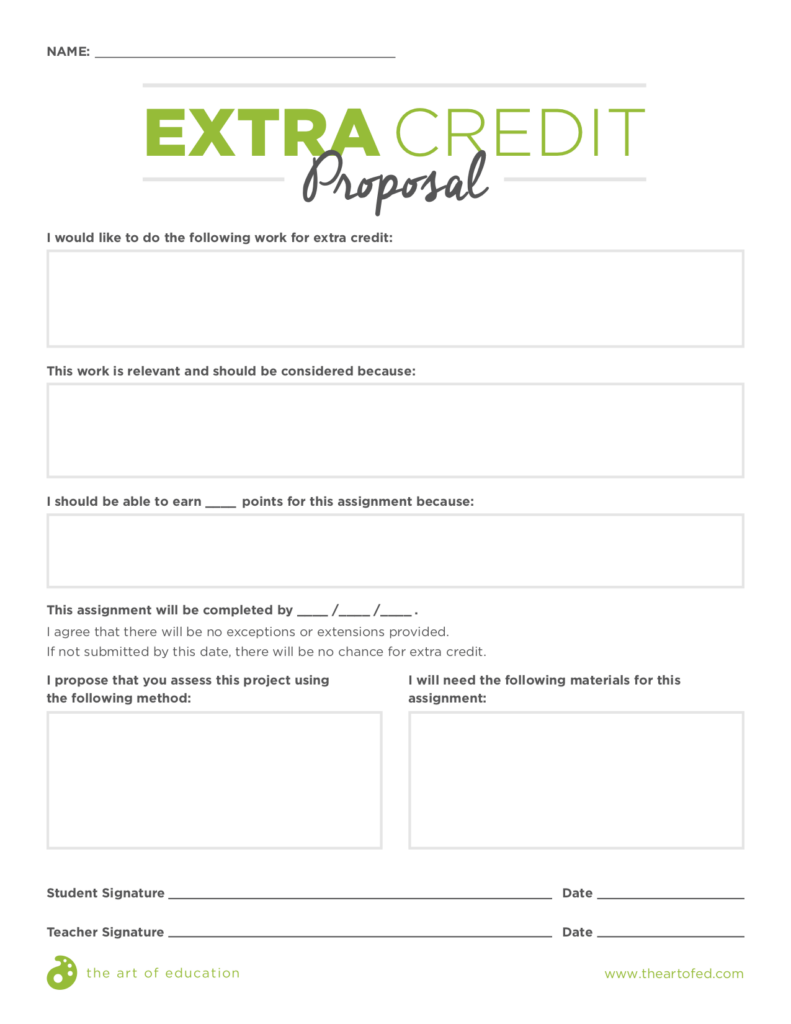
Download Now!
This form makes it the student’s responsibility to come up with an idea for extra credit work. They must explain why it’s relevant, propose how much it should be worth, and how it should be assessed.
Although the responsibility is on the students, you’ll want to make sure they have a few concrete examples to use for inspiration. You can see two examples below.
I would like to create and submit five mug designs instead of only the required two.
This is relevant because it’s forcing me to take the concepts and techniques that we’re learning about and apply them in three new ways. My additional designs will continue to follow the project guidelines and constraints.
I should be able to earn five extra credit points per each completed additional mug. The project is worth 30 points for two mugs, so it seems fair to ask for half of those points for creating three additional pieces.
I will complete all pieces at the same time the overall assignment is due. I plan to spend time working on these pieces during study hall. This will also push me to use my time wisely, and make it easy for my additional pieces to fit into the firing schedule.
I propose you assess this project using the rubric already in place.
I will need access to additional clay and glaze to complete my extra credit assignment.
I would like to come to the art room during my free period to clean and organize supplies.
This is relevant because we all work best in an organized space. It also connects to the National Core Art Enduring standard , ” Artists and designers balance experimentation and safety, freedom and responsibility while developing and creating artworks.”
I should earn six extra credit points. I’ll be spending an hour of my time organizing and reflecting on the best way to use, clean, and organize tools.
I propose you assess this project by my completion of all items on the following checklist:
- All materials are put back into their proper location and supply sheets are updated.
- Paintbrushes are washed and put away.
- Tables, counters, and sinks are wiped and clean.
I plan to complete this on March 5th during my study hall with you. No additional materials are needed.
Principle 2: Extra credit must be completed within a specific time frame.

Most students wait until the last minute to ask for extra credit. Make students aware of when they can and cannot submit proposals. For example, I don’t allow students to submit extra credit during the last two weeks of a marking period. Throughout the marking period, students complete grade reflection sheets , and are reminded if they are unhappy with their grade, the may want to consider submitting an extra credit proposal.

Principle 3: Completion of an extra credit assignment does not automatically result in extra points.

Students often think that because they completed an extra credit assignment, they will receive points. Make it clear to your students you do not guarantee any extra points, reinforcing that they must earn them.
Explain to your students submitting poor quality work for extra credit can result in them earning zero or even negative points.
When to give negative points.
If a student does a poor job on their extra credit assignment or tries to game the system, it may warrant taking away points rather than giving them.
Here are three examples that may warrant a deduction:
- A student chooses to write an artist research report. However, it is full of grammatical and factual errors or includes plagiarised material.
- A student chooses to write a two-page paper about an art-related topic. But, they manipulate the spacing and the font to make their piece of writing seem longer than it actually is.
- A student chooses to write extra comments during a class critique. However, they don’t follow the critique format or give shallow feedback like, “This is cool.”
Having guiding principles sets clear expectations for your students. From the start, students understand that while extra credit is an option, it is extra work, and is not guaranteed.
How are you currently dealing with extra credit in your classroom?
What adjustments do you need to make to your extra credit policy to make it more effective for both you and your students?
Magazine articles and podcasts are opinions of professional education contributors and do not necessarily represent the position of the Art of Education University (AOEU) or its academic offerings. Contributors use terms in the way they are most often talked about in the scope of their educational experiences.

Amber Kane is AOEU’s Director of K–12 Curriculum and a former AOEU Writer and high school art educator. She believes questioning and a focus on the creative thought process helps students uncover their personal voice and impact others.

Unplug with 12 Innovative Early Finisher Activities for the Secondary Art Room

46 Early Finisher Activities to Boost Creativity in Your Elementary Art Room

6 Seedy Parts of the Art World Art Educators Love to Teach

12 Fun and Interesting One-Day Lessons for the Secondary Art Room

- Spotlight on Extra Credit
A Sample of Extra Credit Assignments
- By Maryellen Weimer
- October 12, 2020

2718 Dryden Drive Madison, WI 53704 1-800-433-0499
Magna Publications © 2024 All rights reserved
Are you signed up for free weekly Teaching Professor updates?
You'll get notified of the newest articles..

June 7-9, 2024 • New Orleans
Connect with fellow educators at the teaching professor conference.
- Account creation and closure
- Account management
- Two-factor authentication
- Computers and Phones
- Email and Calendar
- File Storage
- Internet Connections
- Other Tools
- Printing, Copying, & Scanning
- Accessibility
- Devices: College-provided
- Devices: Personal
- Installation
- Microsoft 365
- Off-Campus Access
- Domain of One's Own
- Visitor accounts and access
- College password: Set up and update
- Get started at Bryn Mawr
- Leaving Bryn Mawr College
- BMC Off-Boarding Computing Checklist
- BMC On-Boarding Computing Checklist
- Group Manager: Grant and revoke access
- LITS Service Catalog: View project requests
- BIONIC: Data standards for names and more
- BIONIC: User interface guide
- BIONIC: View budget reports
- Encryption: College-Owned Computer (macOS)
- Encryption: Emails in Microsoft 365
- Encryption: External Storage Drives
- Antivirus Migration: Sophos to CrowdStrike Falcon
- CrowdStrike Falcon Antivirus: Overview
- International travel: technology and security
- Malware and spam: Phishing emails
- Malware and spam: Ransomware
- Password managers: Overview
- Password safety: Best practices
- Two-Factor: Get started with Duo
- Two-Factor: Methods of Authentication
- College computers: Accessibility settings
- College Deskphone: Setup & Use
- College Softphone: Setup & Use
- Common hardware issues
- Help Desk tickets
- LITS's Device Support Cycle
- Standard computers and accessories
- Remote Learning, Teaching, and Work: Suggested Computer Accessories
- Shipping Devices to LITS
- Students: Laptop Purchasing Guide
- Students: What tech to bring to College
- Alumnae/i: Email Forwarding
- Microsoft Outlook: create accessible emails
- Mailing Lists: Management
- Mailing Lists: Overview
- Microsoft 365: Overview
- Microsoft 365: Shared Email, Calendars, and Folders
- Microsoft 365: Export Emails
- Calendly: Schedule appointments
- Outlook: Schedule Zoom meetings through Outlook
- Back up files: Why, where, and how
- Data Clean-Up: Email Inbox
- Data Clean-Up: Storage Drives (C:, H:, S:, Q:, and more!)
- Network Drives: Connect from Windows or macOS
- OneDrive: Share files and folders
- Save a file as a pdf
- Eduroam: Connect to College Wifi
- Ivanti Secure VPN: Off-Campus Access
- Gaming Wi-Fi: Connect your devices
- Network Registration
- Moodle: Log in
- Moodle: Courses Not Showing Up
- Moodle: Browse courses during registration
- Moodle: Text editor
- Moodle: Add files and folders to a course
- Moodle: External tool connections
- Moodle: Add course blocks
- Moodle: Manage Class Recordings with Panopto
- Moodle: Schedule class Zoom meetings
- Moodle: Enable students to schedule appointments
- Moodle: Add JoVE content to a course
- Moodle: Restore recently deleted items from the recycle bin
- Moodle: Link to McGraw-Hill
- Moodle: Link to a Cengage Platform
- Moodle: Customize and organize your course
- Zoom: Schedule course meetings with the Moodle Zoom activity
- Moodle: Hide or show courses and course sections
- Moodle: Copy content from another course
- Moodle: Merge course sections
- Moodle: Save or export course data or content
- Moodle: Export files and coursework
- Moodle: Set up a course gradebook
- Moodle: Hide grades from students
- Moodle: Extensions and overrides
- Moodle: Download assignment to grade offline
- Moodle: Grade assignments with Annotate PDF
- Moodle: Use grading workflow to manage assignment feedback
Moodle: Make an assignment extra credit
- Integrations
- Moodle: Create and manage assignments
- Moodle: Use the Calendar
- Moodle: Convert documents using Sensus Access
- Moodle: Create a quiz
- Moodle: Use Question Bank
- Moodle: Forums
- Moodle: Create a questionnaire
- Moodle: Student Journals
- Moodle: Workshop
- Moodle: View Course Evaluation Results
- Moodle: Add or change your photo
- Moodle: View and submit assignments
- Moodle: Take online quizzes and exams
- Moodle: Participate in a workshop activity
- Moodle: Export course materials
- Moodle: Complete Course Evaluations
- Moodle: Instant Messaging
- Moodle: Get accessible alternative formats for course materials
- Moodle: Enroll or unenroll participants
- Moodle: Using Groups
- Moodle: Message course participants
- Moodle: Take attendance
- Moodle: Guest access to courses
- Moodle: View course as a student
- Moodle: Create checklists for students
- LinkedIn Learning: Overview
- LinkedIn Learning: Create and share playlists
- Macmillan (Achieve, LaunchPad): Link to Moodle
- NameCoach: Add name recording to email and social media
- NameCoach: Add to a Moodle course
- NameCoach: Record and listen to names in Moodle
- Perusall: Add social annotation assignments to Moodle
- Piazza: Alternative Discussion Tool for Moodle
- Posit Cloud: Teaching with Posit Cloud
- Constellate: Log In and Authenticate
- Panopto: Get started
- Panopto: Training and learning resources
- Panopto: Record lecture using desktop app
- Panopto: Record in your browser (Panopto Capture)
- Panopto: Upload audio or video files
- Panopto: Share recordings
- Panopto: Where are my recordings?
- Panopto: Edit videos
- Panopto: Captions
- Panopto: Add the Panopto block to a Moodle course
- Panopto: Copy recordings to a new course
- Panopto: Collect audiovisual assignments
- Panopto: Student guide to uploading and recording videos
- Panopto: Quizzes
- Panopto: Enable video downloads
- Panopto: Get emailed when videos are posted
- Panopto: Record with multiple cameras/video sources
- Panopto: Department folders
- WeVideo: Create an account on Bryn Mawr's license
- WeVideo: Create and add people to projects
- WeVideo: Video and podcast editing basics
- WeVideo: Finish and share videos
- WeVideo: Add subtitles to a video
- WeVideo: Access after you leave BMC
- Remote learning, teaching, and work: Suggested computer accessories
- Remote teaching: Create digitally friendly documents
- Students: Remote learning tools
- Canon supplies: Order, install, and recycle
- HP supplies: Order, install, and disposal
- Making accessible scans
- Office Lens: Scan papers or documents with your smartphone
- Print from a public printer
- Print with a departmental printer
- Scan and copy with printers
- ABBYY Fine Reader: complex OCR
- Adobe Acrobat: Make PDFs accessible
- Beeline Reader: Make web reading easier
- Sensus Access: Convert documents using Sensus in a Moodle course
- Adobe Creative Cloud: College Computers
- College Computers: Software configurations
- College Computers: Request software changes
- Adobe Creative Cloud: Personal Devices
- Microsoft Edge: Automatic Sign-in
- Software for Personal Devices
- ChemDraw: Installation
- Mathematica and Wolfram|Alpha Pro
- OnBase: Installation
- Software Center: Install Programs
- Microsoft Office: Personal Devices
- Microsoft Office: Public lab computers
- Microsoft Word: Create accessible documents
- Microsoft Outlook: Accessibility features
- Office365: Immersive reader accessibility features
- PowerPoint: Create accessible slides
- PowerPoint: Turning on subtitles
- Apporto: Remotely Connect to a Virtual Lab Computer
- Financial Edge: Off-Campus Access
- LabStats: Remotely Connect to a Lab Computer
- Microphone not working
- Microsoft Teams: Overview
- Microsoft Teams: Accessibility Features
- Zoom: Activate and log into a BMC account
- Zoom: Am I using A Bryn Mawr Zoom account?
- Zoom: Schedule meetings
- Zoom: Schedule meetings through Outlook
- Zoom: Schedule class meetings through Moodle
- Zoom: Host a meeting
- Zoom: Security
- Zoom: Use registration to secure meetings
- Zoom: Where are my recordings?
- Zoom: Participate in a meeting
- Zooming in less-than-ideal circumstances
- Zoom: Create and use breakout rooms
- Zoom: Captions
- Zoom: Chat, reactions, and polls
- Zoom: Increase caption and chat font size
- Zoom: Mirror an ipad in a classroom
- Zoom: Multiple cameras
- Hosting Large Online or Hybrid Events New
- Domain of One's Own: Get started
- Domain of One's Own: Install applications
- Domain of One's Own: WordPress
- Domain of One's Own: Grav
- Domain of One's Own: Omeka
- Domain of One's Own: Scalar
- Domain of One's Own: Log into and manage applications
- Domain of One's Own: Upload and manage files
- Domain of One's Own: Migrate content when you leave Bryn Mawr
- Domain of One's Own: TRU Collector/Writer Sites
- Drupal - Basic: Drupal Training Videos
- Drupal - Basic: Log in and find content in Drupal
- Drupal - Basic: Announcements in Drupal
- Drupal - Basic: Events in Drupal
- Drupal - Basic: Biography Listings in Drupal
- Drupal - Basic: Edit Biographies in Drupal
- Drupal - Basic: Embed forms and other content in Drupal
- Drupal - Basic: Flexible Content in Drupal
- Drupal - Basic: Flex Basic WYSIWYG
- Drupal - Basic: Flex Basic 2 - Accordion, Carousel and more
- Drupal - Basic: Images in Drupal
- Drupal - Basic: News Articles in Drupal
- Drupal - Basic: Pages in Drupal
- Drupal - Basic: Preparing Images for the Web in Adobe Photoshop
- Drupal - Basic: Preparing Images for the Web in MS Word
- Drupal - Basic: Tables in Drupal
- Drupal - Basic: Upload and Link to Documents in Drupal
- Drupal - Basic: Website Image Size and Format Guide
- Drupal - Basic: What is a Web Steward? Roles and Permissions Explained
- Drupal Basic - Introduction to Drupal Drafts
- Drupal - Intermediate: Flex Intermediate A - Columns, Gallery and more
- Drupal - Intermediate: Flex Intermediate B - People List, Features and more
- Drupal - Intermediate: Videos in Drupal
- Drupal - Advanced: Bulletin in Drupal
- Drupal - Advanced: Flex Advanced - Syndication and Flex Items
- Drupal - Advanced: Flex content for special roles
- Drupal - Advanced: Themes and Theme Switcher
- Drupal Short Sessions - Syndication
- Drupal Short Sessions - Event 3up
- Drupal Short Sessions - Announcement 4up
- Drupal Short Sessions - News 3up and News+Contact
- Drupal Short Sessions - Story 1up and Story 3up
- Drupal Short Session: Image-based Features in Flex Content
- Drupal Short Session: Image List
- Drupal - Special Role: Admissions Officers in Drupal
- Drupal - Special Role: Course listings in Drupal
- Drupal - Special Role: CV Upload via Provost in Drupal
- Drupal - Special Role: Homepage content in Drupal
- Drupal - Special Role: Navigation Menus in Drupal
- Drupal - Special Role: Program Descriptions in Drupal
- Drupal - Special Role: EMS
- Drupal - Special Role - Story Editor (Group)
- File Names for Web Pages and Blogs: Best Practices
- Make sure your documents show up correctly in search results
- Web Accessibility Guidelines
- Web Forms (Wufoo)
- WordPress: Adding Users to Your Blog
- WordPress: Basics
- WordPress: Changing the author name displayed on your WordPress posts
- WordPress: Close Comments on Old Posts to Reduce Comment Spam
- WordPress: Embedding videos and other media content in blogs
- WordPress: FontAwesome for WordPress
- WordPress: Logging in & Creating a New Blog
- WordPress: Moderating Comments (and spam) in WordPress
- WordPress: Privacy settings for your blog
- WordPress: Updating Your Alumnae Club Blog
- WordPress: User Roles for Blogs
- WordPress: Working with WordPress themes
Moodle Gradebook allows you to mark individual assignments as extra credit, as well as create a grading category in which all grading items are worth extra credit. This tech doc shows how to set up each of these options.
Before you start , you may need:
- an Instructor of record or Other editing teacher role in a Bryn Mawr Moodle course
Mark a grade item as extra credit
The easiest way to do this is to modify the grade item directly by marking the extra credit checkbox. However, the way to do this varies depending on whether you want a) to create an extra credit assignment that students will complete as a Moodle activity or b) to create a new extra credit assignment directly in your gradebook without tying it to a Moodle activity.
- On your Moodle course, click on the Edit Mode toggle (if it isn't already on).
- Create the activity on your Moodle course by selecting +Add an activity or resource in the area you would like your assignment to be displayed (Consult this tech doc to learn how to Create and manage assignments ).
- Next, select Grades from the menu tab in your Moodle course page.
- On the next page, select Grader report > Setup > Gradebook setup from the tabs displayed.
- Search for the grade item for which you wish to give extra credit. Click on the Edit drop-down menu, then click Edit Settings.
- On the new page that appears, under Parent category , check the Extra Credit box
- Click Save changes .
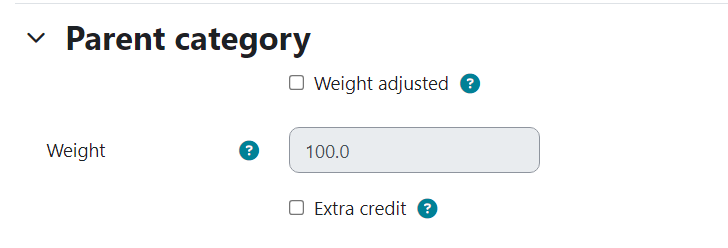
- On your Moodle course, click on the Edit mode toggle (if it isn't already on).
- Next, select Grades .
- Once you’re on the Gradebook setup page, click Add grade item .
- On the new page that appears, adjust all the settings for the grade item you want to create, including giving the item a name, maximum and minimum grade, etc.
- Under Parent category , check the Extra Credit box
- Select Save changes .
Create an extra credit category
It is also possible to create extra credit grade items within a category of their own. This option is useful if you have more than one extra credit item and wish to group them together. If you choose to create an extra credit category , your extra credit grade items will be in a category of their own. In this case, the category should be marked as extra credit but the individual grade items should not.
- Create the activity on your Moodle course by selecting +Add an activity or resource in the section you would like the activity and completing all the steps to save your new activity.
- Once you’re on the Gradebook setup page, click Add Category .
- Give your new category the title “Extra Credit” (or another descriptive title) and select the settings for this new category.

- On the new page, under Parent Category , check the Extra Credit checkbox .

- Finally, finish setting up your extra credit assignments by creating or modifying extra credit grade items following the steps above in (a) and (b) but DO NOT check the extra credit box for each individual grade item.
Videos & further reading on extra credit in Moodle
- MoodleDocs: Gradebook FAQ — Weights and extra credits
If you have any additional questions or problems, don't hesitate to reach out to the Help Desk !
Phone: 610-526-7440 | Library and Help Desk hours Email: [email protected] | Service catalog Location: Canaday Library 1st floor
Related Articles

Thank you! Your feedback has been submitted.
- Library and Help Desk Hours
- Web Accessibility
- Credits and Attributions
- Have feedback?
- © 2021 – Bryn Mawr College. All rights reserved.

Extra Credit Ideas for Middle School Teachers
“What can I do for extra credit?!” I’m pretty sure there isn’t a middle or high school teacher that hasn’t heard these exact words coming from a student’s mouth. Students are HUGE fans of the concept, and honestly, who can blame them? Another way to boost their grades? Most students will leap at the opportunity (especially if their grades are suffering.) But what do teachers think about the use of extra credit? Truthfully, it’s mixed. In this article, I’m going to take a (brief) stab at explaining the pro’s and con’s of offering additional points to your middle school science students, as well as offer a few extra credit ideas for middle school teachers.
Let’s dive in, shall we?
Reasons to offer extra credit:.
Offering extra credit isn’t just about boosting bad grades or humoring your students’ last-minute requests for a better grade. Fans of extra credit assignments typically view extra credit opportunities as a way to provide students with extra enrichment in addition to their regular assignments. Here are a few reasons you should consider offering extra credit in your classroom:
- Extra assignments (even those given for extra credit) are a great way to give greater exposure to the course material.
- These opportunities give struggling students the chance to keep trying.
- Extra credit work can be a fun way to explore different concepts related to your curriculum that you might not otherwise cover. (Ex: Current events)
- Extra credit assignments are a great way to boost student engagement.
EXTRA CREDIT PITFALLS TO AVOID:
Not every teacher is a fan of extra credit (and with good reason.) Personally, I believe that extra credit assignments can be a helpful tool within the classroom, but like all things, it can be misused and abused. Here are a few extra credit pitfalls to avoid:
- Offering bonus points for attendance. In my opinion, just “showing up” is not enough to earn extra points. Students should earn extra credit when they go the extra mile.
- Giving too many extra points. Extra credit can be nice to boost the grade of an individual assignment, but it shouldn’t radically change a student’s overall course grade. In this case, their class grade is no longer a true refection of their learning, content understanding, and effort. (Ex: A student earning a D receives a B after factoring in extra credit points.)
- Offering extra credit for every assignment or assessment. This may decrease students’ motivation to give a good effort the first time they complete an assignment. After all, why try if you know you’ll essentially be given a “do-over.” Instead, I recommend offering extra credit sporadically and for different types of assignments.
EXTRA CREDIT IDEAS FOR MIDDLE SCHOOL TEACHERS
Alright, so you’ve decided you DO want to offer extra credit opportunities in your classroom, but you need some extra credit assignment ideas to get you started. Well, my friend, I’ve got you covered. Here are a few of my favorite extra credit ideas for middle school teachers:
COMPLETING STUDY GUIDES
Periodically, you may consider offering bonus points to students who complete their study guides. Not only will this encourage students to finish this important classwork, it’s also a great way to ensure that your students have everything they need to prepare for tests and quizzes. The following items are a few of the study guides I’ve used with my science classes. You might offer bonus points for the entire study guide or just for a specific section.

TEST CORRECTIONS
Test (and other assignment) corrections can be a powerful exercise for students. It teaches the valuable life skill of being able to reflect on mistakes and learn from them. When having students make test corrections, I HIGHLY recommend that you ask for more than a list of correct answers. (Let’s face it…any middle schooler can look up or copy down the correct answers without learning a darn thing.) Instead, I’d recommend having your middle school students give a written explanation for why their original answer was incorrect and what the correct answer should have been. Yes, it’s extra work…but this process helps facilitate true learning.
It might look something like this:
#1. I answered ____________________. This is incorrect because _______________. The correct answer is _______________ because ____________________.
INFOGRAPHICS <sh> Science is a discipline that lends itself well to the creation of infographics! Have your students create an infographic, chart, or diagram that illustrates an important concept within your unit. Having to synthesize the information in their notes and create a visual representation of this information is a great way for students to deepen their understanding of important concepts (and in my opinion, is well worth a few bonus points.)
For example… <SH4>
If you are teaching the states of matter, you may ask your students to create their own visual diagram or infographic representing how one substance might move between the different states of matter.
FAMOUS SCIENTIST SUMMARIES
Who doesn’t love a good biographical assignment? I like to offer famous scientist summaries as an extra credit assignment students can tackle for homework or free time assignments. Personally, I think it’s a good idea to let students choose their own famous scientist to research. This encourages creativity and ownership over the project.
QUESTION OF THE DAY
If you’re looking for an easy way to offer bonus points, having students complete a science “question of the day” can be a great way to do just that! These extra credit questions could be used a bell ringers or a simple addition to a homework assignment.
NEWS ARTICLE SUMMARIES
Incorporating current events and news articles into our class discussion is one of my favorite extra credit ideas for middle school teachers. Having students read and summarize news articles is an interesting way for them to see the “real world connection” of our science curriculum.
What are YOUR favorite ways to use extra credit in your classroom?
Let’s Stay Connected!
Continue the discussion in my Facebook Group for Middle School Science Teachers or my Classroom Management Facebook Group .
Or get free science resources delivered straight to your inbox by signing up for my newsletter! I promise to never be spammy. I’m just a regular teacher who likes helping teachers teach and students learn.
RELATED POSTS

PRO’S & CON’S: GOING PAPERLESS IN THE SCIENCE CLASSROOM

7 Activities to Include in your Middle School Science Stations

OUTDOOR SCIENCE CLASS ACTIVITIES

Teaching Students How To Study
Download ready to use resources now, follow me on.

Copyright © 2024 Laney Lee. All Rights Reserved.
- PRIVACY POLICY
- TERMS AND CONDITIONS
- REFUND POLICY
Financial Tips, Guides & Know-Hows
Home > Finance > How Does Extra Credit Work

How Does Extra Credit Work
Published: January 11, 2024
Learn how extra credit works in finance and how it can impact your financial situation. Gain a deeper understanding of the benefits and potential risks.
(Many of the links in this article redirect to a specific reviewed product. Your purchase of these products through affiliate links helps to generate commission for LiveWell, at no extra cost. Learn more )
Table of Contents
Introduction, what is extra credit, how is extra credit earned, different types of extra credit, pros and cons of extra credit, how does extra credit affect grades, strategies for maximizing extra credit opportunities, instances where extra credit may not be possible.
Extra credit is a common term in the academic world that refers to additional points or opportunities given to students to improve their grades beyond the standard coursework requirements. It provides students with a chance to boost their overall grade by going above and beyond the basic expectations of the course. Extra credit can be a valuable tool for both students and teachers, offering benefits and challenges for both parties involved.
Typically, extra credit is offered as a way to reward students who demonstrate exceptional effort, performance, or commitment in their studies. It can take the form of extra assignments, projects, or activities that go beyond the scope of the regular curriculum. While extra credit is often seen as an opportunity to improve grades, it can also serve as a means to explore additional content or delve deeper into a subject area of interest.
Extra credit can be found in various educational settings, from elementary school to college. While the specific guidelines and policies may vary from one institution to another, the underlying concept remains the same. It offers students a chance to demonstrate their dedication and curiosity, while also encouraging them to take on additional academic challenges.
However, it’s important to note that extra credit should not be seen as a replacement for regular classwork or as a shortcut to achieving a higher grade. It is meant to be an optional opportunity for students to go above and beyond expectations and be rewarded accordingly.
In this article, we will explore how extra credit works, how it can be earned, the different types of extra credit, the pros and cons of extra credit, and its impact on grades. We will also discuss strategies for maximizing extra credit opportunities and instances where extra credit may not be possible.
Extra credit refers to additional points or opportunities offered to students to improve their grades beyond the standard requirements of a course. It is a way for students to demonstrate their knowledge, effort, or commitment to their studies and can provide an extra boost to their overall grade.
Extra credit can be seen as a form of incentive or reward for students who go above and beyond the basic expectations of the course. It allows them to explore topics in greater depth, engage in additional assignments or projects, or participate in supplementary activities outside the regular curriculum. By taking on these extra challenges, students can showcase their dedication to learning and potentially raise their grades.
The specific ways in which extra credit is earned can vary depending on the course and the instructor’s policies. Some common methods of earning extra credit include:
- Completing additional assignments or projects
- Participating in class discussions or presentations
- Attending workshops, seminars, or guest lectures related to the course material
- Participating in extracurricular activities that are relevant to the subject matter
- Contributing to class-related discussions or forums outside of regular class hours
It’s important to note that not all courses or instructors offer extra credit opportunities. Some may have strict policies that do not allow for any additional points beyond the assigned coursework. It is essential for students to thoroughly review the syllabus and communicate with their instructors to understand if extra credit is an option for a particular course.
Extra credit can be particularly beneficial for students who are motivated, engaged, and seeking to challenge themselves academically. It offers an opportunity to excel beyond the standard expectations of the course and can be a source of personal satisfaction and accomplishment. However, it is essential to approach extra credit with a balanced mindset. It should not replace or overshadow the regular coursework, but rather serve as an optional avenue for students to further enhance their learning experience.
Earning extra credit requires proactive engagement and a willingness to go the extra mile in your studies. While specific methods of earning extra credit may vary depending on the course and instructor, there are some common approaches that students can take to maximize their opportunities:
- Seeking clarification: Understand the instructor’s policies and guidelines regarding extra credit. Review the syllabus and ask questions if any details are unclear. This will help you determine the specific criteria for earning extra credit and the deadlines associated with it.
- Attending office hours: Utilize the opportunity to meet with your instructor during office hours. Seek guidance on how you can earn extra credit and discuss potential ideas or strategies. Demonstrating your interest and proactive approach can make a positive impression.
- Participating actively: Engage actively in classroom discussions, ask meaningful questions, and contribute insightful comments. Active participation can demonstrate your commitment to the course and may increase your chances of being considered for extra credit opportunities.
- Completing additional assignments: Inquire if there are any additional assignments or projects that you can take on to earn extra credit. This could involve completing supplemental readings, conducting research on related topics, or writing an extra paper. Ensure that you understand the requirements and deadlines associated with these assignments.
- Volunteering for extra activities: Stay informed about any extracurricular activities or events related to the course. This could include attending guest lectures, participating in workshops, or joining study groups. Volunteering for these activities can demonstrate your enthusiasm for the subject matter and potentially earn you extra credit.
Keep in mind that each instructor may have their own approach to awarding extra credit. Some instructors may offer a set number of extra credit points for specific tasks, while others may assign a grade boost based on overall exceptional performance. It is crucial to understand the expectations and requirements for earning extra credit in each course you are enrolled in.
However, it’s important to remember that earning extra credit should not overshadow your focus on the regular coursework. Extra credit opportunities should be seen as ways to enhance your learning experience and demonstrate your commitment, rather than as a substitute for completing the assigned course requirements.
By actively seeking out opportunities, understanding the requirements, and putting in the effort, you can increase your chances of earning extra credit and further enriching your academic experience.
Extra credit can come in various forms, depending on the course, instructor, and subject matter. Here are some common types of extra credit that students may encounter:
- Additional assignments: One common type of extra credit is the completion of additional assignments or tasks beyond the regular course requirements. These assignments may include research papers, presentations, or problem-solving exercises that delve deeper into the subject matter or explore related topics.
- Participation opportunities: In some cases, instructors may offer extra credit for active classroom participation. This can involve contributing to discussions, asking thoughtful questions, or leading class activities. By actively engaging in the learning process, students can earn extra credit while enhancing their understanding of the material.
- Extracurricular activities: Some courses may provide opportunities for students to earn extra credit through participation in extracurricular activities related to the subject matter. This could involve attending relevant events, such as lectures, conferences, or field trips. By immersing themselves in the subject outside the classroom, students can broaden their knowledge and earn extra credit in the process.
- Class enhancement projects: Certain courses may offer extra credit for projects or initiatives that enhance the learning experience for all students in the class. This could involve developing educational resources, creating study guides, or organizing study groups. By contributing to the class as a whole, students can earn extra credit while fostering a collaborative and supportive environment.
- Team-based projects: In courses that involve group work, some instructors may offer extra credit for exceptional teamwork and collaboration. By actively participating in group projects, demonstrating effective communication, and contributing to the overall success of the team, students can earn extra credit while developing valuable interpersonal skills.
While these are common types of extra credit, it’s important to remember that the options can vary significantly between courses and instructors. It’s crucial to review the syllabus and communicate with the instructor to understand the specific types of extra credit opportunities available in a particular course.
It’s worth noting that some instructors may not offer extra credit at all, as they believe it could potentially create an unfair advantage or encourage students to focus on earning extra points rather than fully engaging with the course material. However, when used thoughtfully, extra credit can provide additional motivation and opportunities for students to deepen their understanding and showcase their abilities.
Ultimately, the variety of extra credit options allows students to explore their interests, demonstrate their knowledge and commitment, and enhance their overall learning experience.
Extra credit can offer both advantages and drawbacks for students and instructors alike. Understanding the pros and cons can help students make informed decisions about whether to pursue extra credit opportunities. Below are some of the key benefits and considerations:
- Grade improvement: One of the primary benefits of extra credit is the potential to improve a student’s overall grade. By earning additional points through extra assignments or participation, students can offset any lower scores they may have received during the regular coursework.
- Opportunity for mastery: Extra credit assignments or projects often allow students to delve deeper into the subject matter, providing an opportunity for further learning and mastery of the material. This can enhance the student’s understanding and appreciation of the course content.
- Increased motivation: Extra credit can serve as a powerful motivator for students. Knowing that there is an opportunity to earn additional points can inspire students to go above and beyond the minimum requirements, fostering a sense of enthusiasm and engagement in their studies.
- Flexibility and choice: Extra credit generally offers students the flexibility to choose assignments or activities that align with their interests. This allows for a more personalized learning experience and encourages students to take ownership of their education.
- Demonstration of dedication: Earning extra credit showcases a student’s commitment to their studies. It sends a message to instructors and future employers that the student is proactive, motivated, and willing to put in extra effort to achieve their goals.
- Potential distraction: Despite the advantages, extra credit can sometimes become a distraction if students become too focused on earning extra points rather than fully engaging with the course material. It is essential to strike a balance between regular coursework and the pursuit of extra credit.
- Time constraints: Taking on extra assignments or projects can be time-consuming, especially when students have multiple courses or commitments. It’s important to consider whether the time investment required for extra credit is feasible without neglecting other academic responsibilities.
- Unequal opportunities: Some students may have more access to extra credit options than others due to various factors such as scheduling conflicts or personal circumstances. This can create disparities in grading and potentially lead to an unfair advantage for certain students.
- Reduced focus on regular coursework: In some cases, students may prioritize earning extra credit over completing the standard coursework. This can result in a lack of foundational knowledge or a neglect of key concepts, which can ultimately hinder academic development.
- Flawed grading system: Extra credit can sometimes mask gaps or deficiencies in the regular grading system. It may provide an opportunity for students to inflate their grades without necessarily demonstrating a comprehensive understanding of the subject matter.
When considering whether to pursue extra credit opportunities, students should weigh these pros and cons and evaluate whether the potential benefits align with their academic goals and priorities. It’s crucial to approach extra credit with a balanced mindset and prioritize a holistic learning experience.
Extra credit can have a significant impact on a student’s overall grade. When students successfully earn extra credit points, it can help improve their grade by increasing their point total. However, it’s important to understand how extra credit is factored into the grading system and how it may vary depending on course policies and instructor preferences.
In courses where extra credit is offered, instructors typically establish guidelines on how extra credit points are incorporated into the grading scheme. Here are a few common ways in which extra credit can affect grades:
- Boost to overall grade: Earning extra credit can directly boost a student’s overall grade. The extra points can be added to the total points earned throughout the course, thereby increasing the percentage or letter grade received. The impact of extra credit on the overall grade will depend on the number of extra credit points available and the student’s performance in the regular coursework.
- Grade percentage adjustment: In some cases, instructors may use extra credit as a percentage adjustment mechanism. For example, if an exam is worth 40% of the final grade and a student earns extra credit worth 5%, the extra credit can be added to the exam percentage. This adjustment can positively affect the student’s grade by potentially offsetting any lower scores or improving the overall grade distribution.
- Grade point calculation: Extra credit can also affect the calculation of grade points. In institutions where grade points are assigned to specific grade ranges, earning extra credit may push a student’s final grade into a higher grade point category. This can have implications for GPA calculations, especially for students who are trying to maintain a certain GPA level or meet specific academic requirements.
- Grade buffer: In some cases, extra credit can act as a buffer to protect against a low score or poor performance in the regular coursework. If a student struggles with certain assignments or exams, earning extra credit can help mitigate the negative impact by increasing the overall grade and providing some cushioning effect.
It’s important to note that the specific impact of extra credit on grades will vary depending on the weight assigned to it by the instructor and the student’s overall performance in the course. In some instances, extra credit may only have a nominal effect on the final grade, while in other cases, it can make a substantial difference.
It’s also worth mentioning that not all instructors or courses offer extra credit opportunities. Some instructors may choose to rely solely on the assigned coursework to determine grades, while others may incorporate alternative methods for students to improve their grades, such as grade remediation or participation in enrichment activities.
In any case, students should consider extra credit as an additional opportunity to demonstrate their knowledge, dedication, and willingness to go beyond the minimum requirements of the course. It can be a valuable tool for students seeking to improve their grades and showcase their commitment to their studies.
Maximizing extra credit opportunities requires careful planning and active engagement. Here are some strategies that can help you make the most of these opportunities:
- Read the syllabus: Review the course syllabus and familiarize yourself with the instructor’s policies regarding extra credit. Understand the criteria, deadlines, and any specific guidelines for earning extra credit in the course.
- Ask questions: Seek clarification from your instructor regarding the extra credit options available. Discuss with them any concerns or ideas you may have for earning extra credit, and ask for suggestions or guidance to ensure you are on the right track.
- Plan your workload: Assess your workload and commitments for the semester. Determine how much time and effort you can dedicate to extra credit assignments or activities without neglecting your regular coursework or other responsibilities.
- Stay organized: Keep track of extra credit opportunities and deadlines using a planner or digital calendar. Prioritize your tasks and allocate time for extra credit assignments alongside your regular coursework to ensure everything is completed on time.
- Participate actively: Engage actively in classroom discussions, ask questions, and contribute insights to demonstrate your commitment and understanding of the subject matter. This can create a positive impression and potentially increase your chances of being considered for extra credit opportunities.
- Build relationships: Develop a positive relationship with your instructor. Attend office hours, ask for feedback on your work, and seek suggestions on how you can earn extra credit. Showing your enthusiasm and dedication can make a positive impression and potentially lead to additional opportunities.
- Seek out additional assignments: Inquire with your instructor if there are any additional assignments or projects you can undertake to earn extra credit. Express your interest in going beyond the regular coursework and showcase your willingness to put in extra effort to enhance your learning experience.
- Explore extracurricular activities: Keep an eye out for extracurricular activities, workshops, or events that are related to the subject matter of your course. Participating in these activities can help you gain additional knowledge and potentially earn extra credit.
- Collaborate with classmates: Form study groups or collaborate with classmates on assignments or projects that offer extra credit. Working together can foster a collaborative learning environment and provide opportunities for shared knowledge and brainstorming.
- Reflect on your progress: Periodically evaluate your progress in the course and assess whether pursuing extra credit opportunities aligns with your academic goals and priorities. Be mindful of your overall performance and ensure that you are maintaining a balance between regular coursework and extra credit assignments.
Remember, the goal of pursuing extra credit is to enhance your learning experience and showcase your dedication to your studies. By implementing these strategies, you can maximize your chances of earning extra credit and further enrich your academic journey.
While extra credit can be a valuable opportunity for students to improve their grades and deepen their understanding of the course material, there are instances where extra credit may not be possible or offered. It’s important to be aware of these circumstances to manage your expectations and plan your approach to the course accordingly:
- Course policies: Some courses may have strict policies that do not allow for extra credit. This could be due to the instructor’s teaching philosophy, the nature of the subject matter, or the specific learning outcomes and assessment methods employed in the course. It’s crucial to carefully review the course syllabus and communicate with your instructor to determine if extra credit is an option.
- Time constraints: In certain cases, the nature of the course or the instructor’s workload may make it difficult to incorporate extra credit opportunities. Instructors may not have the additional time or resources to create and grade extra assignments or projects. Time constraints can limit the availability of extra credit, even if the instructor is willing to offer it.
- Course structure: Courses that have a highly structured curriculum or tightly defined learning objectives may not lend themselves to extra credit. Instructors may prefer to focus on specific core concepts or skills and may not have room within the course structure to offer additional assignments or opportunities.
- Subject matter: Certain subjects, such as math or sciences, may have less flexibility for incorporating extra credit because of the need for objective assessment methods and a standardized curriculum. In these subjects, extra credit opportunities that align with the learning goals and assessment practices may be limited.
- Equity and fairness: Instructors may choose not to offer extra credit to maintain fairness and equity among students. Some instructors believe that extra credit can create disparities or unfair advantages, especially when students have different access to opportunities outside of class or when it may overshadow the assessment of core course content.
- Course workload: Some courses may have a heavy workload already, leaving little room for extra credit assignments. Instructors may prioritize covering the necessary curriculum within the given timeframe, making it challenging to include additional assignments or activities.
- Performance-based assessment: In courses that rely primarily on performance-based assessments, such as lab work or practical exams, extra credit may not be feasible. These types of assessments focus on specific skills and may not lend themselves to the flexibility of offering additional points.
It is crucial to respect and understand the limitations and decisions of your instructor when it comes to offering extra credit. While extra credit can be beneficial, it is not always feasible or appropriate in every course. It’s important to focus on performing well in the assigned coursework and seek other avenues for academic growth and engagement if extra credit is not an option.
Extra credit offers students a unique opportunity to enhance their academic experience and potentially improve their grades beyond the standard coursework requirements. It allows for additional assignments, participation, or activities that go beyond the scope of the regular curriculum, providing students with a chance to demonstrate their dedication, curiosity, and commitment to their studies. However, extra credit may not be offered in every course or under every circumstance.
It is important for students to familiarize themselves with the specific policies and guidelines regarding extra credit in each course they take. By understanding the expectations, requirements, and potential benefits of extra credit, students can make informed decisions about whether to pursue these opportunities based on their academic goals and priorities.
Maximizing extra credit opportunities requires careful planning, active engagement, and a balanced approach. It is crucial to prioritize the regular coursework and ensure that pursuing extra credit does not overshadow the core learning objectives of the course.
Overall, extra credit can provide a means for students to go beyond the minimum requirements, explore their interests, and deepen their understanding of the subject matter. It can serve as a source of motivation, recognition, and personal growth for students who choose to take on the additional challenges offered through extra credit assignments or activities.
While extra credit is not a guarantee in every course, students can also find alternative ways to enhance their learning experience. This could include participating in extracurricular activities, seeking academic enrichment opportunities, or engaging in independent research to expand their knowledge and skills.
Ultimately, the decision to pursue extra credit should align with individual academic goals, time commitments, and personal interests. By approaching extra credit opportunities thoughtfully and responsibly, students can make the most of their educational journey and maximize their opportunities for success.
Our Review on The Credit One Credit Card
20 Quick Tips To Saving Your Way To A Million Dollars
Normal Profit: Definition, Formula To Calculate, Example
Article XII Company Definition
Latest articles.
8 Ways to Generate Passive Income with Cryptocurrency
Written By:
Next-Level Learning: Examining the Advantages of Online Post-Master’s FNP Education
The Recipe for a Balanced Life: Mixing Online Learning With Health and Wellness
Money Matters: Master Your Financial Future
Accounting For Photographers: Important Tips
Related post.

By: • Finance
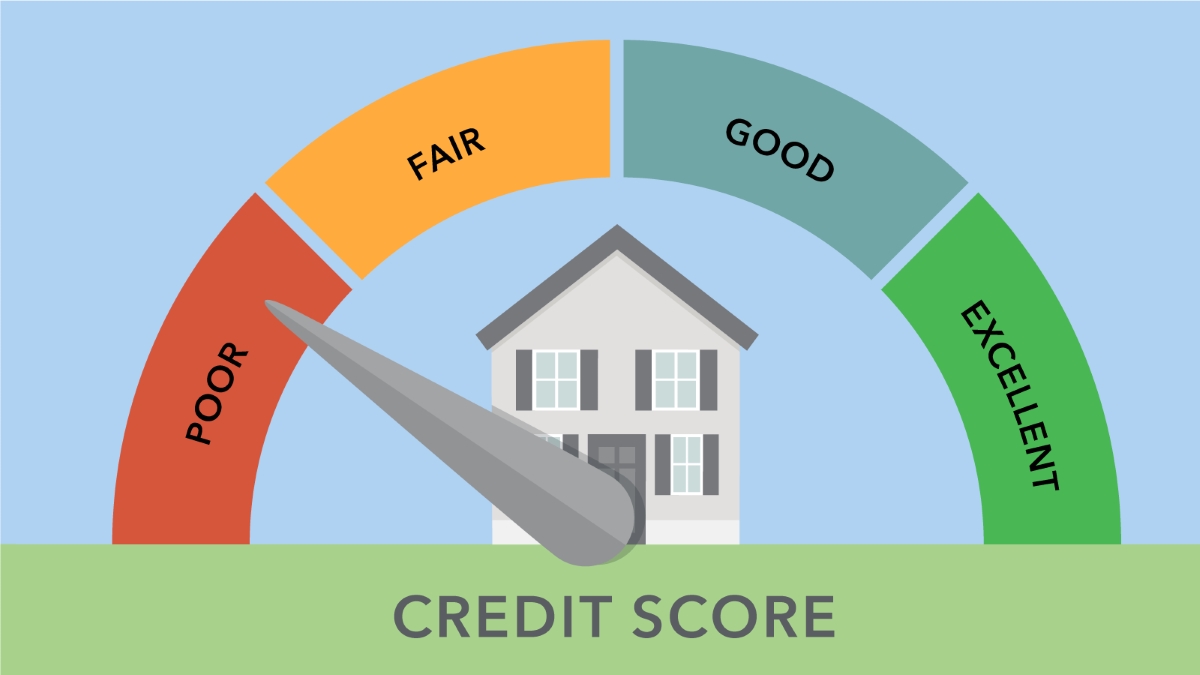
Please accept our Privacy Policy.
We uses cookies to improve your experience and to show you personalized ads. Please review our privacy policy by clicking here .
- https://livewell.com/finance/how-does-extra-credit-work/
- Study Guides
- Homework Questions
HIS 201 Extra Credit Assignment Documentary Review Instructions (1)
Assignment 6
The goal of this assignment is to work with object-oriented programming and exceptions in Python.
Instructions
You will be doing your work in Python for this assignment. You may choose to work on this assignment on a hosted environment (e.g. tiger ) or on your own local installation of Jupyter and Python. You should use Python 3.12 for your work, but other recent versions should also work. To use tiger, use the credentials you received. If you choose to work locally, Anaconda is the easiest way to install and manage Python. If you work locally, you may launch Jupyter Lab either from the Navigator application or via the command-line as jupyter-lab .
In this assignment, we will be implementing a collection of classes that work together to orchestrate an online market. There will be products, including both grocery and household, the inventory, and a customer’s shopping cart. You will need to test your classes to make sure they work properly.
The assignment is due at 11:59pm on April 5.
You should submit the completed notebook file required for this assignment on Blackboard . The filename of the notebook should be a6.ipynb .
Please make sure to follow instructions to receive full credit. Because you will be writing classes and adding to them, you do not need to separate each part of the assignment. Please document any shortcomings with your code. You may put the code for each part into one or more cells. Remember to redefine your class (execute the cell with the definition) before testing it.
0. Name & Z-ID (5 pts)
The first cell of your notebook should be a markdown cell with a line for your name and a line for your Z-ID. If you wish to add other information (the assignment name, a description of the assignment), you may do so after these two lines.
1. Product Classes (20 pts)
Create four classes related to the products your online store will sell: StoreItem, HouseholdItem, GroceryItem, BulkItem. StoreItem is the base class which has a name, sku, and price. sku is a unique identifier for each item. GroceryItem subclasses from StoreItem and has a nutrition field that defaults to an empty dictionary, and HouseholdItem also is a subclass of StoreItem but has a brand name. BulkItem subclasses from GroceryItem and adds a unit field (lbs, kg, ml, oz). Add constructors and method(s) to support printing human-readable strings for these items. Note that the bulk items should display there units with the strings. Think about which class to put the method(s) in. For example,
prints "Two items: Cheerios (38942) @ 3.99, Bananas (4011) @ 0.59/lb"
- Make use of the base class’s constructor. Don’t rewrite what it is already doing
- Remember which of the dunder methods we should use for human-readable strings
- You can override methods in subclasses
2. Inventory Class (20 pts)
Create an Inventory class that stores both the items the store carries and the amount of each item that the store has in stock. It should have add_items and remove_items methods that take a StoreItem object and an amount and adds or removes, respectively, that to the current inventory. In addition, add a find_item method that takes a sku and returns the StoreItem object with that sku. It should also have a method has_enough that given an item and amount, returns a boolean that indicates whether the inventory has more than that that amount. Finally, add a method that again returns a human-readable string with all the items in the inventory and their amounts.
- It will be probably be useful to be able to refer to items and amounts by sku so set up the correct objects to store the data
- Remember the dunder methods when supporting operators.
- Use the methods in Part 1 to help with the dunder method here.
3. ShoppingCart Class (20 pts)
Create a ShoppingCart class that tracks the items a customer wishes to buy. It should store products and the amount of each item in the cart. It should have add_items and remove_items methods that take a StoreItem object and an amount and adds or removes, respectively, that to the current cart. Also, add a method that returns a human-readable string with all the items in the cart and their amounts. In addition, add support for += and -= operators that will add or remove a single (1) item (or unit) from the cart. Finally, add a cost method that computes the total cost for all of the items in the cart. Important: Think about the similarities between classes and whether you can use OOP concepts to minimize your work for this class.
- Find the correct dunder methods to support incremental addition and subtraction
4. Store Class (20 pts)
The Store class will keep track of both the inventory and the customers shopping. To that end, it has a get_cart method that returns a new ShoppingCart object and keeps track of it. Define a max_carts class variable that defaults to ten (10) as the maximum number of carts in the store, and a class method set_max_carts that sets this variable, raising an exception if this value is not a non-negative integer. get_cart should then raise an exception if the store has too many carts are in use. In addition, write a checkout method that checks the inventory to make sure the number of items being bought in the shopping cart are available and then deducts the quantities selected in the shopping cart from the inventory. If there is not enough left in the inventory, the checkout method should raise an exception alerting that about which item(s) are not in stock. checkout should return the cost of all the items bought and remove the cart from the store.
- Remember where class variables are defined
- Make sure to put a helpful error message for each exception
5. [CS503 Only] Exceptions (15 pts)
We should add more exceptions to our classes to avoid particular issues. Here is the list of exceptions to raise and the circumstances:
- Raise an exception if a user tries to add or remove a non-integer amount of an item that is not a BulkItem . Bulk items do allow fractional amounts!
- Raise a KeyError in find_item if the sku doesn’t exist
- Raise an exception in remove_items if more items are removed from the inventory than exist.
6. Summary and Testing
The final list of classes and methods to be added. Note that all classes should have constructors that properly initialize objects, and the instance fields are not listed here.
- <method for human-readable string>
- remove_items
- += (operator)
- -= (operator)
- set_max_carts (class method)
The following code should help you test your work:
which outputs something similar to:
This code should raise an exception (too many carts):
This code is ok.
For CSCI 503 students, the following can be used to test Part 5:
Extra Credit
- CSCI 490 Students may do Part 5 for extra credit
- Add support for transferring items from one shopping cart to another

IMAGES
VIDEO
COMMENTS
Extra credit assignments, when assigned to correlate with your curriculum requirements and course expectations, provide students with another opportunity to meet course standards. This is especially true if the extra credit is able to assess learning goals while catering to different learning styles.
In this example, the extra credit assignment is housed within the Extra Credit assignment group with multiple assignments worth more than zero points [1]. Notice that the assignment groups weights total 110% [2]. Any assignment placed within the Extra Credit assignment group will have either a positive or neutral effect on your students ...
Students complete the extra credit question or assignment and submit it to their instructor. The extra credit, usually worth a set number of points, counts toward the student's grade. On an exam, extra credit questions can boost your final grade. Take an exam worth 20 points. A 2-point extra credit question would make up for a wrong answer or two.
The extra credit assignments are usually open-ended and intentionally vague. Students completing extra credit from Category 1 can earn between 0.5 and 1% added to their total grade. Category 2 assignments are more laborious and require more creativity, and time investment. Depending on the
Here are 10 extra credit assignment ideas that you can use for your classes: If you are looking for some extra credit assignment ideas, we have compiled a list of 10 extra credit assignment ideas that you can use in your classroom. Write a book report on a book of your choice. The book should be related to the topic of your course.
Extra Credit Assignments: An Innovative Approach. My students are always asking for opportunities to earn bonus points. I offer a variety of assignments during the semester, but they still want bonus points, which they seem to think are easier to obtain than the required points. Generally, I'm opposed to bonus options because I feel that if ...
While opportunities for extra credit certainly have their virtues, to this day, I dread the inevitable requests that most frequently rear their heads around midterms and finals when students are reckoning with their grades.
Benefits. Well-designed extra credit assignments have the following benefits for students and the instructor. Students engage with the material beyond the assigned coursework, which helps reinforce their understanding of concepts taught in class. Students have more agency in working toward the final grade they want to achieve.
29 November 30, 2023. You will learn how to award your students extra credit (additional points) in your course in Canvas. There are several different ways to award extra credit within Canvas. Choose the method below that you are interested in learning about: Extra credit Assignment. Follow the steps in this video to learn how to create an ...
There are several different ways to award extra credit within Canvas. Choose the method below that you are interested in learning about: Extra credit Assignment. Award extra points to an existing Assignment. Add "Override" column in the Gradebook. Award extra points to a Quiz. Create a Rubric to include extra credit.
If you weight your grades with assignment groups, you will need to create an extra credit assignment group with a weight greater than 0% and an assignment with greater than 0 points in order for Canvas Gradebook to calculate the total score correctly. All the assignment groups in your course plus the extra credit assignment group should weigh ...
Click Assignments in the course navigation. Click +Assignment. Type the Assignment Name (for example, Extra Credit) Type 0 for Points. Choose No Submission for the Submission Type. Click Update Assignment. Click Publish. After students complete the work, manually add points in the Gradebook. Click Grades in the course navigation.
The assignment equates to 15% of the student's course grade. With this grade dynamic in mind, my students could receive up to 10 points extra credit on individual posts by completing the activity below. The language that follows is copied directly from my assignment sheet: Extra Credit: Up to 10 points total. Comment on a classmate's post.
The first method for setting up an extra credit assignment is to add an extra credit weighted assignment group containing only the extra credit assignment. For example, let's say you add an Extra Credit assignment group worth 3%. Your grading breakdown may look something like the following: Assignment Group. Weight.
Extra credit is an optional assignment of some sort that a student can do to boost his/her grade. Teachers can present an extra credit assignment in many ways. It could be a presentation, a paper, a book report, a visual aid and so much more. It serves more than one purpose when also used as a review for a test or lesson.
Extra Credit Activity Examples: This page from TeachTCI lists 10 ideas for extra credit assignments. The activities allow for students opportunities to complete activities that strengthen their academics, as well as ones that get them more involved with their local communities. Some of the activities involve attending school activities or ...
I have an small extra credit assignment for my students to get together and organize their own Zoom meeting to either study or play games (I included some websites with online options). I'm hoping it gives them an excuse to talk to their classmates even though we're remote, helps them de-stress some, and organize Zoom meetings if they've ...
Principle 2: Extra credit must be completed within a specific time frame. Most students wait until the last minute to ask for extra credit. Make students aware of when they can and cannot submit proposals. For example, I don't allow students to submit extra credit during the last two weeks of a marking period.
A Sample of Extra Credit Assignments. These extra credit assignments were submitted in response to our request for samples. We've organized them by the goals they seek to advance. In some cases, they are condensed versions of the assignment descriptions submitted, but we've worked with the authors to make sure the descriptions include all ...
The Cons of Offering Students Extra Credit. Believing there will be a future opportunity to earn points back, students may knowingly skip or underperform on an assignment, or not prepare thoroughly enough for a test. Credit given for non-academic accomplishments, such as winning a game, may not offer all students a fair and equitable chance to ...
Mark a grade item as extra credit. The easiest way to do this is to modify the grade item directly by marking the extra credit checkbox. However, the way to do this varies depending on whether you want a) to create an extra credit assignment that students will complete as a Moodle activity or b) to create a new extra credit assignment directly in your gradebook without tying it to a Moodle ...
Extra credit assignments are a great way to boost student engagement. EXTRA CREDIT PITFALLS TO AVOID: Not every teacher is a fan of extra credit (and with good reason.) Personally, I believe that extra credit assignments can be a helpful tool within the classroom, but like all things, it can be misused and abused. Here are a few extra credit ...
Extra credit can come in various forms, depending on the course, instructor, and subject matter. Here are some common types of extra credit that students may encounter: Additional assignments: One common type of extra credit is the completion of additional assignments or tasks beyond the regular course requirements. These assignments may ...
4.09 Declaration. History document from Greenville Technical College, 3 pages, HIS 201 Extra Credit Assignment Documentary Review Instructions Revised January 2022 Part 1: What: A critical review of a historical documentary. The various programs may or may not be identified by the instructor as the course develops. How: The student.
In this assignment, we will be implementing a collection of classes that work together to orchestrate an online market. There will be products, including both grocery and household, the inventory, and a customer's shopping cart. You will need to test your classes to make sure they work properly. ... Extra Credit. CSCI 490 Students may do Part ...